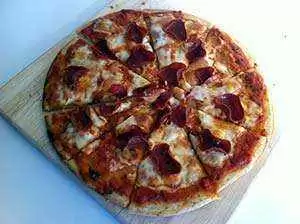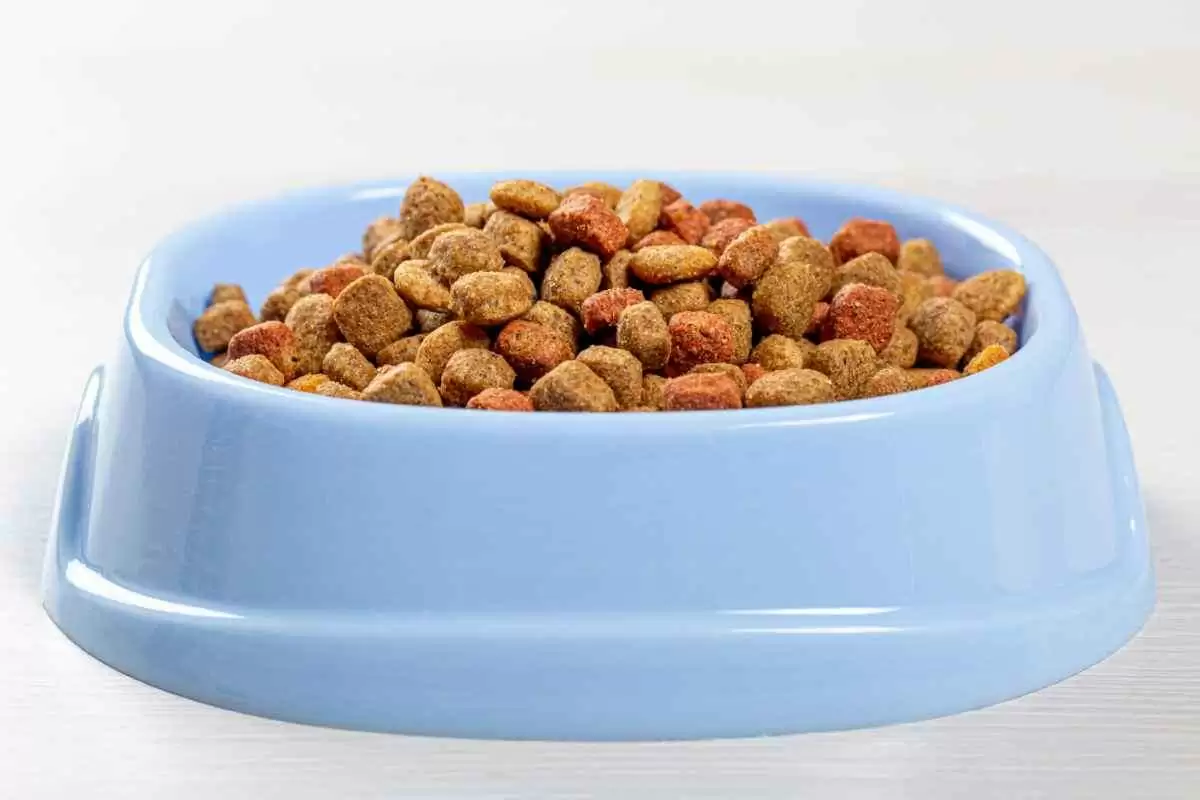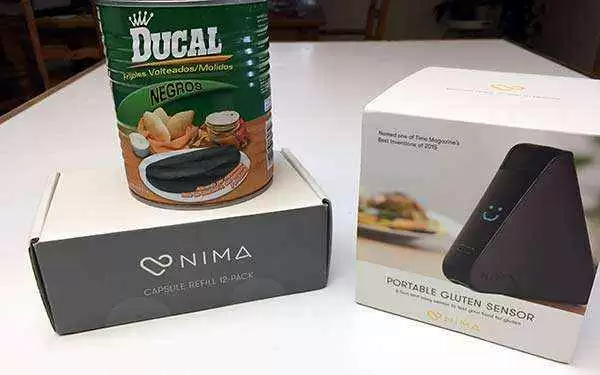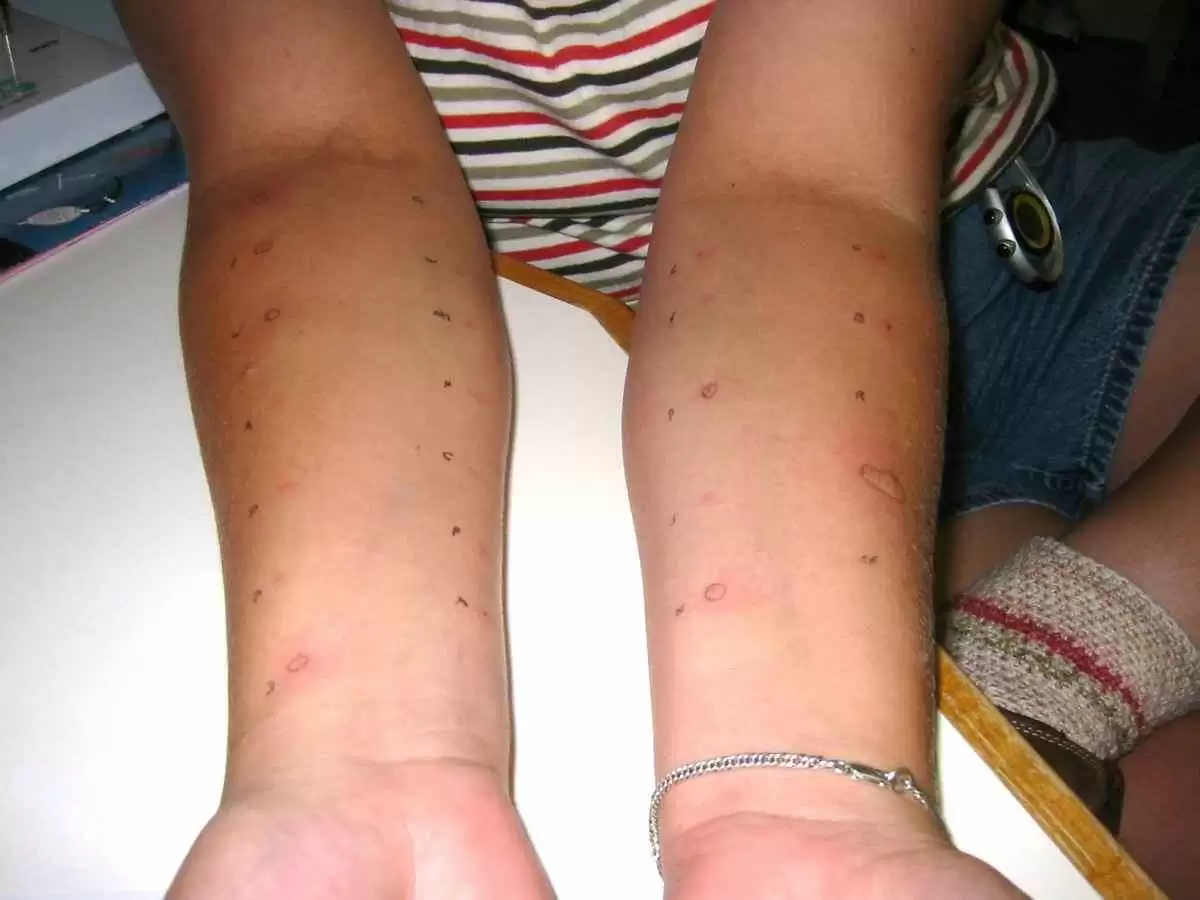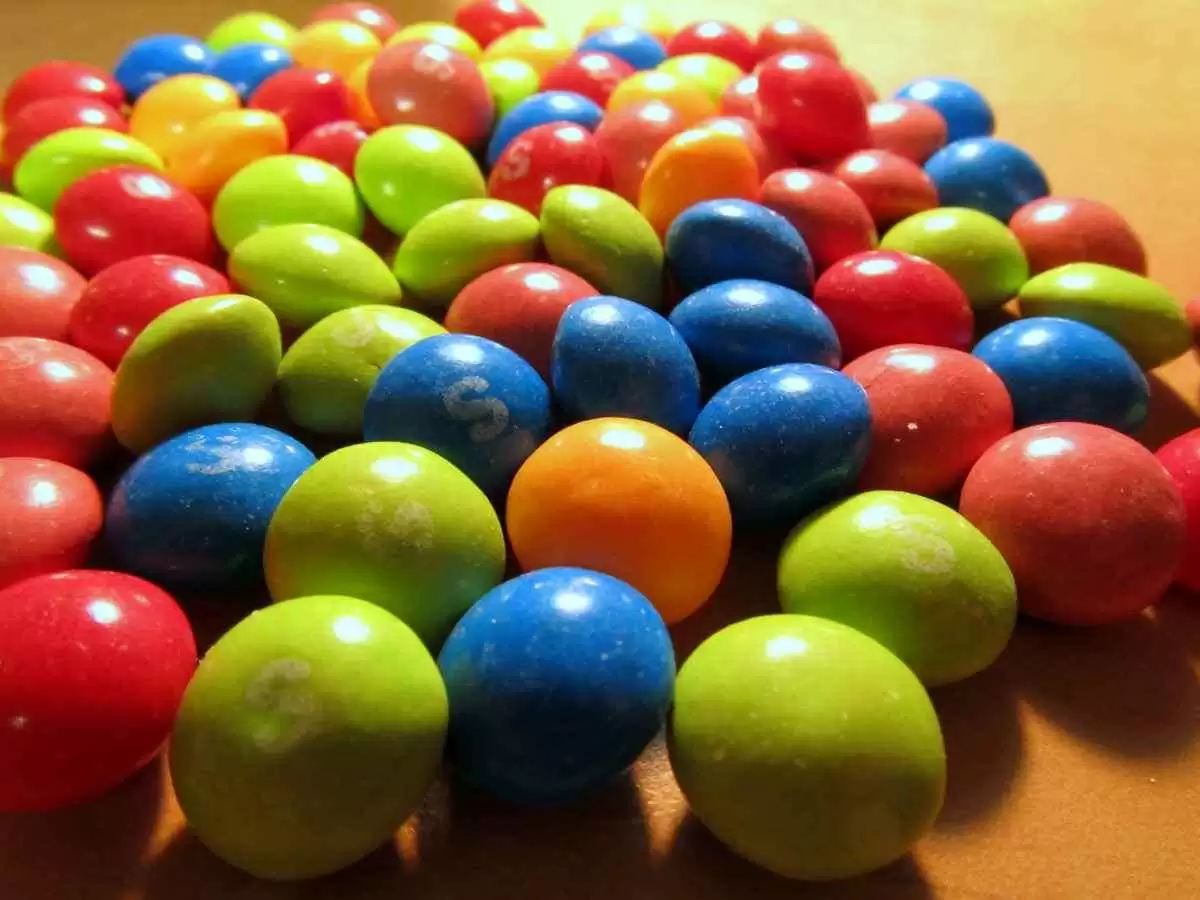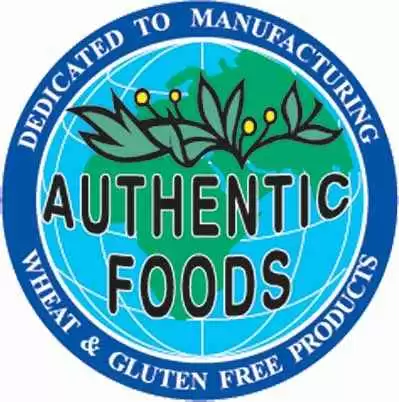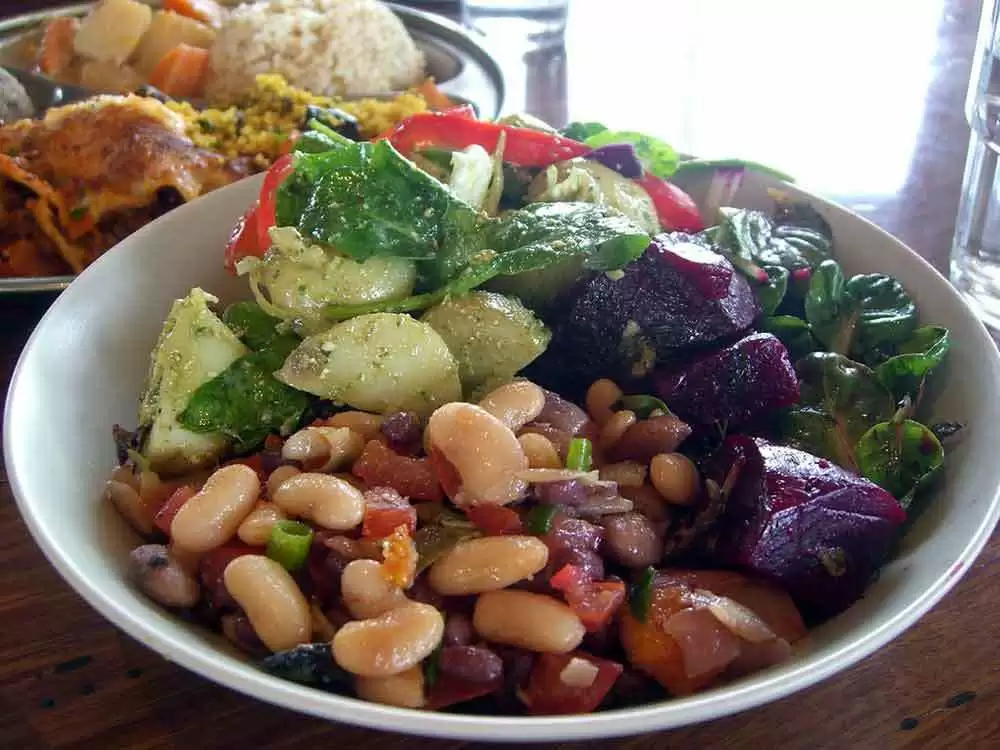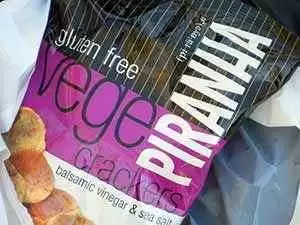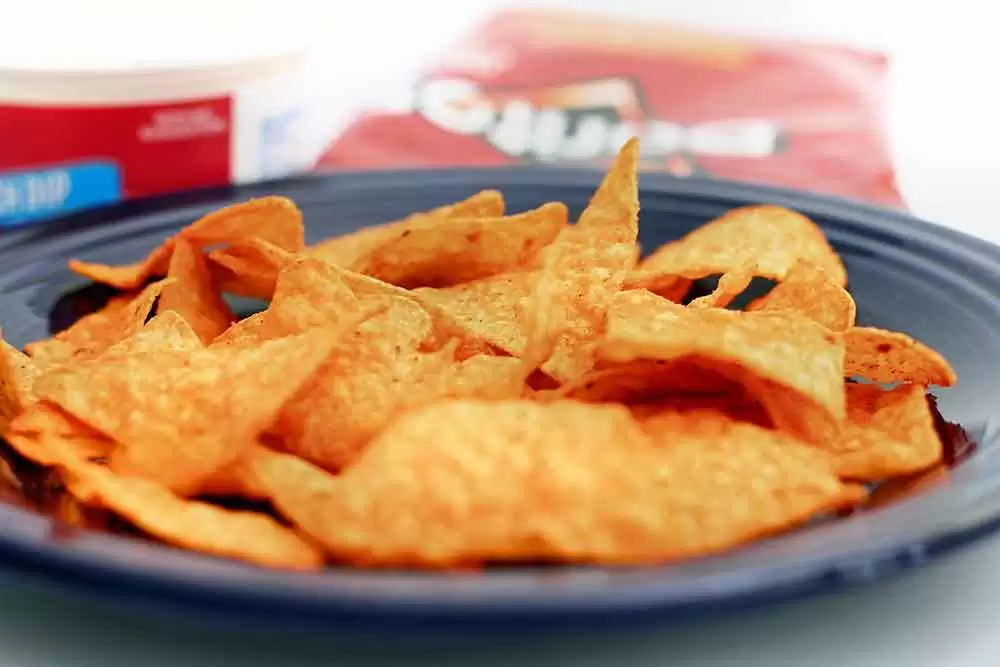-
Welcome to Celiac.com!
You have found your celiac tribe! Join us and ask questions in our forum, share your story, and connect with others.
-
Celiac.com Sponsor (A1):
Celiac.com Sponsor (A1-M):
-
Get Celiac.com Updates:Support Celiac.com!
Search the Community
Showing results for tags 'foods'.
-
Celiac.com 12/21/2017 - After a lot of trial and error we celiacs learn, often the hard way, to eliminate foods that are poisonous to our bodies. Sadly, we often forget about what "goes onto" our skin. Since the skin is the living outer layer of our bodies it absorbs not only water and oils, it also absorbs cosmetics that can be poisonous to our celiac bodies, most specifically those of us afflicted with dermatitis herpetiformis (often called celiac disease of the Skin). Men, before you set this article aside, thinking it's only for women and you are exempt, please read on. One of 133 Americans has a wheat-related allergy according to CNN.com. We have a tendency not to group toothpaste and lip-glosses with cosmetics, and we usually ignore vitamins and medications when researching celiac disease and dermatitis herpetiformis. We forget to ask our hairdresser what products they are using and whether they contain wheat or gluten, and glibly apply night creams (to absorb into our skin as we sleep) and mud packs that promise similar benefits. Inquiring into the gluten content of cosmetics, I contacted more than twenty leading companies, then I waited. I was discouraged, particularly by the blatant rudeness of some of the responses I received. Meanwhile, I had to learn whether gluten could be absorbed through the skin. Some websites answered that question with a direct "no". Even some physicians responded saying "no". However, since the skin is the largest living organ in the body and it does absorb various oils and emollients, listing gluten-containing components of medicinal and non-medicinal ingredients allows consumers with celiac disease (celiac disease) or wheat allergies to make informed choices when purchasing and/or consuming natural health products. It enables them to avoid gluten in quantities that may trigger adverse reactions. There are numerous articles on dermatitis herpetiformis and celiac disease making claims so contradictory that it is no wonder we are confused. And I'm not talking about accidental ingestion of gluten. Some such articles claim that trace amounts of gluten One article insists that the skin is not going to absorb gluten, even though our skin is a living organism that can absorb suntan lotions, trans-dermal drugs, etc. It is so susceptible to absorption that when you place a slice of onion in your sock you will taste it in your mouth the following day. How can these websites make such contrary claims? The skin absorbs flavors as well as creams containing gluten. On the other hand, "Glutino" had an article on record, written on September 14, 2010, regarding "Hidden Gluten in Health and Beauty Products". It states that if you apply hand lotion that contains gluten and then prepare food you are exposing yourself to accidental ingestion and your food to cross contamination. They suggest a site called: naturallydahling.com, a site that lists gluten-containing ingredients commonly used in cosmetics. Research proving the full extent of how much your skin absorbs is still unavailable, but to those who believe that "what goes on, goes in", the cosmetic industry is full of unknowns. The size of gluten molecules suggests that they may not be able to pass through the skin, but chemicals and technology designed to enhance skin absorption are already present, if not prevalent, in the cosmetic industry. These chemicals are potentially dangerous and often go untested for negative health effects, yet are widespread in lotions, antiperspirants, perfumes and the "Great Mother Market" anti-wrinkle cosmetics. Since the cosmetic industry is self-regulated it is more important than ever to carefully read labels and use natural or organic products whenever possible. If you find yourself reacting to a particular cosmetic, it is possible that you may have an increased sensitivity to gluten, an allergy or even dermatitis herpetiformis. But wait a minute! Aren't we told that gluten cannot pass through the skin? I suffered terribly from the use of an "Anti-Frizz" product for my hair that caused a massive outbreak of dermatitis herpetiformis. I should have read the label all the way down to the end. I would have found, in very small print, "wheat germ oil". When researching for this article, I wrote to the company and mentioned my problems with their product. I received an apology and a sample of their "new and improved" "Frizz-Ease" product. They obviously do not know their own products and the fancy names they use are as confusing to them as they are to me. The "new and improved" product contained Avena Sativa, the Latin name for OAT. I was also told that I likely just had "hives" on the back of my scalp, as oats are still somewhat controversial. Some research suggests that oats in themselves are gluten free, but that they are virtually always contaminated with other grains during cultivation, harvest, distribution or processing. Recent research indicates that a protein naturally found in oats (avenin) contains peptide sequences closely resembling some peptides from wheat gluten. The oat peptides caused mucosal inflammation in significant numbers of celiac disease sufferers. Some examination results show that even oats that are not contaminated with wheat particles may be dangerous. Again, I was told not to introduce oats into my diet, or use oatmeal as a facial mask until I had been free of a dermatitis herpetaformis outbreak for at least a year. Thus far I have not been able to get relief for that long. It seems the celiac or those who suffer from dermatitis herpetiformis {and let's face it, most people suffering from dermatitis herpetaformis have celiac disease} have to apply the rule of "caveat emptor" - Let the buyer beware. Tolerance to gluten varies among individuals with celiac disease and there are limited clinical scientific data on a threshold for the amount of gluten required to initiate or maintain an immunological reaction in celiac disease patients. "Therefore there is no clear consensus on a safe gluten threshold level." The Dermatologist I see at The University of British Columbia Hospital has told me to tell people in restaurants that gluten is poison to my system and I can become very ill from ingesting gluten. They are a little more careful before telling me a dish is gluten free, and hopefully through education the cosmetic industry is going to improve its testing and cease glibly stating things as "fact" when they simply do not know. Industries that produce over-the-counter medications and vitamin supplement, especially those that may contain gluten as a binding agent, should also be scrutinized. We have come a long way, but large challenges are still ahead. One of our biggest challenges is reading the labels on these products. One almost needs to carry a magnifying glass when shopping. Cosmetics, which include hair products, soaps, perfumes and toothpastes also run us into problems, often big, "itchy" problems. The male celiac/dermatitis herpetaformis experience can also include outbreaks from any product that comes into contact with the skin and particularly those that "stay" on the hair or skin. Who would have known that sun tan lotions could contain wheat germ oil? It is difficult enough to eliminate words such as "triticum vulgare" the Latin name of wheat or "wheat germ" containing ingredients! In preparation for this article, I contacted the following companies: Avon, Clairol, Clarins, Clinique, Coty, Covergirl, Estee Lauder, Garnier, John Frieda, John Paul Mitchell, L'Oreal, Mabelline, Marcelle, Neutrogena, Olay, Pantene, Revlon, and companies that go under general all-encompassing headings such as "Life Brand". This can be a daunting task, and "gluten free" and "wheat free" are not the same thing. Some of the things that I learned in this rather massive undertaking include the rule of "Pac Man". Companies are sometimes taken over by bigger companies and when this occurs their rules change. A company that at one time did not test on animals or use machines that were cleaned prior to using products claiming to be gluten free are now glibly adopting the "new bigger and better". I was shocked to find out that some of the containers from the smaller company were still being used after these PAC MAN take-overs, to save on manufacturing costs. And, remember, once several ingredients are combined the "organic" ingredient probably ceases to be "organic". Some women (and men, you are not exempt here) expect to pay a higher price for a luxury brand assuming that the gorgeous bottle of eye cream sold at Saks for $60.00 is going to work better than the $1.99 tube on the clearance rack of a local store. Just ensure the product has not reached its "sell by" date because it may all be psychological. What you have to concern yourself about, as a celiac patient or a person with dermatitis herpetiformis, is whether there is gluten or wheat in that product. Before you splurge on an expensive product take the time to compare it to a similar product from one of their sister brands. Usually an online store (like Drugstore.com) will list the ingredients. Or you can check on a site like "Makeup Alley" which is a great resource, offering numerous reviews and you can ask questions of the extremely knowledgeable posters on this message board. Another great resource is a large paperback book, titled "Do not go to the Drugstore Without Me" written by Paula Begoin. When I purchased the books in 2001 it was in its 5th Edition. NB: This is not a book specifically for celiac disease or dermatitis herpetiformis, but it was in this book that I found out about "Glutamic Acid". It is derived from wheat gluten and is an amino acid that can have water binding properties for the skin. It also explains glycerylesters that form a vast group of ingredients that are a mixture of fatty acids, sugars, and non-volatile alcohols. These fats and oils are used in cosmetics as emollients and lubricants as well as binding and thickening agents. At the back of this book is a list of the companies that do not test on animals and those that do, but again, the PAC MAN Rule applies. I purchased the book for myself, my daughter, and daughter-in-law, specifically because when my daughter was in her twenties she seemed to think she simply must buy her shampoo from the hairdresser because only $45.00 shampoo was good enough for her hair. It was a big eye opener when she moved out of home and had to purchase it herself! I believe that the more we know about beauty products and the beauty industry the wiser our purchases will be. Consider, for instance, the cost of research and development for say, L'Oreal who develop formulas that can be used in Garnier Shampoos ($3.99) and Kerastase shampoo ($29.99) It doesn't take long to realize that it is a good idea to compare products at different ends of the price scale. Sometimes, two products from two different brands will have the same patent number. The difference is in the non-active ingredients, which give it a unique texture, scent and/or color. Also, it is wise to photo-copy, and even apply plastic covering to lists of "safe" beauty products, just as it is wise to keep a copy of "safe" and "unsafe" foods on hand when you go shopping. When you cannot even pronounce some of the words used in foods and beauty products how can you be expected to remember what is safe to apply to your hair and skin? I received a very nice letter from Teresa Menna, Manager at L'Oreal in Quebec who told me that L'Oreal has abolished gluten in the composition of L'Oreal products. However, on reading more literature I find that Garnier is a mass market cosmetic brand of L'Oreal, and L'Oreal is part of the Group P&G. P&G stands for Proctor and Gamble and P&G Beauty brands can be found on the site:_ http://pgbeautygroomingscience.com/product.php {The Company Garnier Laboratories was started in 1906 and acquired by L'Oreal in the 1970's}. I was unaware prior to researching this article that L'Oreal owned Kerastase, or that L'Oreal had purchased the MAC Cosmetic line, or that the KAO Brands Company owns Ban, Biore, Jergens and John Frieda. Here are some of the ingredients you might find in cosmetics that could indicate wheat or gluten: Avena Sativa {Latin name of oat, or "oat" term containing ingredients Hordeum distichon {Latin name of barley, or "barley" term containing ingredients} Hydrolyzed malt extract Hydrolyzed wheat protein Hydrolyzed vegetable protein Wheat germ Vitamin E Cyclodextrin Barley extract Fermented grain extract Oat (Avena sativa) Samino peptide complex Secale Cereale (Latin name of rye, or "rye" term containing ingredients) Stearyldimoniumhydroxypropyl Phytosphingosine extract Triticum vulgare {Latin name of wheat, or "wheat" term containing ingredients} Dextrin Dextrin palmitate Maltodextrin Sodium C8-16 Isoalkylsuccinyl Wheat Protein Sulfonate Yeast extract Anything with wheat in the name Thoughts: Some cute person gave the warning to ensure your lipstick is gluten free even if you don't have any skin issues. You could swallow some lipstick and get gluten in your system! Another person adds at the bottom of their e-mail to be sure to check guidelines regularly because company policies can change yearly and the list is only to be considered as "guidelines" and make-up ingredients can change each time a company changes or the scientists within that company decide to add to or delete certain products. {Makes you feel very safe as a celiac/dermatitis herpetaformis person doesn't it?} Another e-mailer suggested that mascara labeled as a "thickening agent" should be fearfully evaluated by the celiac/dermatitis herpetaformis person because the thickening agent is often "flour" and can sometimes cause eyelashes to fall out! Who knew? Noted on one e-mail, ‘So-called luxury brands can be laden with synthetic ingredients that do not cost more than their not so luxurious counterparts. True natural products that do perform, and there are a few such brands on the market, are authentic natural products that actually deliver what they promise and they truly do cost more to make because raw ingredients are much higher in cost. In fact, the cost is significantly higher when pure high grade ingredients are used. Letter received: " We have compiled a list of gluten free beauty products available on sephora.com. These products do not contain any wheat, rye or barley derivatives, and they were made in gluten-free laboratories so there is no chance of cross-contamination. But since you cannot be too careful, discontinue use of any product that triggers an attack." Letter received from Clairol:- "Gluten is a protein found in wheat, rye and barley. Although it is not added directly to our product, it may be present in fragrances. Due to the difficulty of tracing the source ingredients for the variety of fragrances used in manufacturing our products, we cannot provide specific levels of gluten content for any of our fragrance blends. Be aware that even products labeled "unscented" will still contain masking scent, therefore they may potentially contain gluten." Advertisement: World's Top Ten Cosmetic Companies : "Beauty begins on the inside, check out our post on ‘The Top Five Foods for Amazing Skin'" - Posted by The Greenster Team "I finally got up the nerve to go through my own (their) personal care products and look them up on "SKIN DEEP" and was very disappointed. The Company that makes my mascara (L'Oreal) tests on animals as does the company that makes my eyeliner (Covergirl) and my under eye concealer (Made by Physician's Formula) contains parabens" THE GREENSTER TEAM creates great articles, list the top ten cosmetic companies, what portion of the world's market they share and their hazard range. Letter received from Mabelline:- "Please find below most ingredients containing gluten (wheat and other grains). We invite you to take this list and compare it to our ingredient listings every time you buy a new product. When in doubt, do not hesitate to do your own research or contact your doctor." {Caveat Emptor} REMEMBER:- The truth is that there is no such thing as gluten free. The FDA has proposed a less than 20 ppm gluten -free standard in 2006. That was its first attempt to define the term gluten free, but the agency has yet to finalize it. The USDA is awaiting the FDA's decision before moving ahead. STILL WAITING. With the number of products making unregulated gluten free claims on the rise, the marketplace can be scary for consumers with gluten sensitivity and wheat allergies. Why hasn't the FDA finalized its 2006 definition of gluten free? As part of sweeping legislation known s FALCPA the Food Allergen Labelling and Consumer Protection Act of 2004, Congress ordered the FDA to define and permit the voluntary use of the term gluten free on the labeling of foods by August 2008. As directed, the FDA issued proposed gluten-free regulations on schedule but seems to have failed to follow through with a final ruling. There has been no explanation for the delay. Since the Cosmetic Industry is a self-regulating body it seems {appears, is assumed} that we the consumers are on our own as far as researching what goes on our skin and in our hair, because some of the letters I have received leave it to the celiac or dermatitis herpetiformis sufferer to research their own products. Even a letter from Avon states:- "Although Avon sells quality products, there is always possibility of contamination during manufacturing or changes/substitutions of ingredients. As with everything related to celiac disease, dermatitis herpetiformis and gluten Intolerance, products, ingredients and preparation may change over time. Your reactions to a specific product, ingredient may be different from the reactions of others. Like eating at a restaurant, you have to make a choice whether to consume/use a product. The list is meant to be a "guide" and does not guarantee that a product is 100% free of gluten. Dacia Lehman, Avon and GIG assume no responsibility for its use and any resulting liability or consequential damages is denied." LETTER: - Proctor and Gamble "The WHMIS rating is designed to rate raw materials and not formulated products such as ours. Nor are our consumer products required to be labeled under the Occupational Safety and Health Administration (OSHA) Hazard Communication Standard. Thus labelling of our products with WHMIS ratings or any other hazard rating should not be required by any state health and safety regulatory agencies." That letter is signed by Asela for the Pantene Team. LETTER:- May 2, 2012 - xyz@ca.loreal.com - "We have received your message and we will get back to you as soon as possible. Web Sites: Gluten-free Lifestyle: glutenfree-lifestyle.com (Gives gluten free products by type and by company) i.e.: deodorants, face & body wash, make-up, suntan lotion, toothpaste, moisturizer, lotion, shampoo & conditioner, shave cream, gels, after shave, laundry products, cleaners, soap, etc. Beauty Industry: Who Owns What? Glutino - Hidden Gluten in Health Products - Glutino & Gluten Free Pantry Blogs: www.gluten-free-cosmetic-counter.org Beauty Blogging Junkie Ebates Shopping Blog In The Makeup Lipstick Powder n'Paint Shop With a Vengeance Smarter Beauty Blog The Beauty Brains Sephora Sephora's iGoogle Beauty Portal References: Codex Standard for Foods for Special Dietary Use for Persons Intolerant to Gluten. Codex STAN 118 - 1979 ROME Government of Canada 2008 - Regulations Amending the Food and Drug Regulations (1220- Enhanced Labeling for Food Allergen and Gluten Sources and Added Sulphites) Health Canada 2007 - celiac disease and the Safety of Oats Labeling of Natural Health Products Containing Gluten - Health Canada Notice 2010
-
Celiac.com 03/01/2024 - Imagine you and a friend are trying to decide on a place to meet up for dinner. But with celiac, this is a high-stakes decision – the last gambit you took on a restaurant left you sick for days, and you've had enough of the same two places you always eat at. Truth is, gluten-free (GF) food is not necessarily hard to come by – many restaurants today offer accommodating choices or are flexible with their menu items. However, finding them has never been easy. Many user-submitted reviews are either out-of-date or even contradictory, and even if you go the extra mile and contact the restaurant, the staff member on the other end of the line may not be fully aware of all the relevant dietary considerations. But even if potential diners do get the all-clear, there's no actual way to verify the information they receive is legitimate. As a result, those with celiac or gluten sensitivity are left to take any dietary information they discover with a grain of salt. Reaching Your Destination: Atly's Gluten-Free Eats Map Atly, the user-generated social mapping platform revolutionizing location-based knowledge sharing, has created a new Gluten-Free Eats map entirely dedicated to helping celiac individuals find suitable restaurants seamlessly and quickly. Developed in conjunction with dieticians and nutritionists and with feedback from those within the celiac and GF community, the map provides a uniquely high level of detail, imparting a degree of confidence that other platforms are simply unable to deliver. To truly accommodate celiac eaters, the map categorizes restaurants based on their respective friendliness levels – those that are 100% GF verified, celiac friendly, or those that are accommodating and serve GF dishes in non-GF kitchen settings, allowing users to make well-informed decisions. Unlike other discovery platforms, Atly goes the extra mile to contact restaurant owners and staff to understand just how safe the food and kitchen stations are for patrons with celiac or gluten sensitivity – information which is routinely updated and reverified. For restaurants that fall into the "gray area," the map provides users with an essential list of cuisine-tailored questions that celiac and GF customers need to remember to ask their waiters. At sushi restaurants, for example, Atly's GF platform reminds users to request soy sauce that does not contain malt vinegar. Limitations of Current Digital Platforms Despite its popularity, Google Maps leaves much to be desired – especially for those with celiac disease. While it can offer users quick general overviews and concise reviews of places that may be gluten-free, it does so without any substantiated verification process. And even the apps and websites facilitated by and tailored to gluten-free communities have their own shortcomings. On top of delivering a clunky user experience, these platforms suffer from stagnant user-generated information. What's more, they tend to focus on 100% gluten-free locations as opposed to non-GF restaurants that are accommodating. Because of these limitations, many are relegated to painstakingly filtering through the vast "gray area" of dining options – that is, the restaurants that accommodate GF needs but aren't wholly dedicated to GF cuisine or aren't necessarily branded as GF or celiac-friendly. Celiac and GF consumers deserve a thorough and easy-to-use tool that enables them to find a restaurant quickly, offering confidence to anyone following a GF lifestyle. All You Can Eat Those suffering from celiac or gluten allergy have to be diligent, and insufficient solutions complicate that task every time they want to dine out. It should be just as easy for a GF person to find a restaurant as it is for someone who isn't. Likewise, they should feel just as relaxed and confident at a restaurant as someone without celiac. Fortunately, Atly's new Gluten-Free Eats map transforms uncertainty into an all-you-can-eat buffet. By fostering up-to-date restaurant information, verification processes, and tiered safety rankings, individuals with celiac are not limited to the same old GF-only options. Going out no longer needs to involve endless Google searches, anxiety-filled dining experiences, or the risk of falling ill. It can be the enjoyable experience it was meant to be. Atly's Gluten-Free Eats map is currently available to early-bird subscribers for $6.99 per month. For more information about the map and to start exploring, click here.
-
Celiac.com 10/14/2023 - Celiac disease is a complex autoimmune condition that affects millions of people worldwide. For those with celiac disease, gluten, a protein found in wheat, barley, and rye, is the primary antagonist. When individuals with celiac disease consume gluten, their immune system mounts an attack on the lining of the small intestine, causing a range of digestive and systemic symptoms. The cornerstone of managing celiac disease has traditionally been a strict gluten-free diet. However, the landscape of celiac disease research is evolving. While gluten remains a central focus, emerging studies suggest that the triggers for celiac-related symptoms may extend beyond gluten-containing grains. Researchers and healthcare professionals are now exploring a broader spectrum of substances that may provoke adverse reactions in individuals with celiac disease. These lesser-known triggers and cross-reactive substances warrant closer examination to better understand their potential impact on those living with celiac disease. While gluten's central role in celiac disease is well-established, the emerging field of celiac research is shedding light on additional factors that might influence the disease's course and symptomatology. This expanded perspective acknowledges that, for some individuals, celiac-related symptoms may persist even in the absence of overt gluten exposure. Understanding these complexities requires exploring non-gluten triggers and cross-reactive substances that may affect individuals with celiac disease. Here we will to delve into these lesser-known sources of potential harm and offer insights into their significance within the celiac community. Non-Gluten Triggers Beyond gluten, there is increasing recognition that other components within grains or cross-reactive substances may trigger symptoms in certain individuals with celiac disease. For some, these non-gluten triggers are essential to consider when managing the condition and understanding why certain individuals continue to experience symptoms even on a strict gluten-free diet. One of the most debated non-gluten triggers in the celiac community is oats. Oats themselves are gluten-free, however, they are often processed in facilities that also handle wheat, barley, or rye. This cross-contamination can result in significant levels of gluten on the oats, which can lead to relapses and failure to recover in celiac individuals. To address this concern, certified gluten-free oats are available in many markets, providing a safe alternative for those who react to regular oats. Oats and Celiac Disease Oats, often hailed as a nutritious and versatile cereal grain, have become a topic of both excitement and contention within the celiac community. On one hand, oats are a naturally gluten-free grain, and their inclusion in the celiac diet can provide much-needed dietary diversity. On the other hand, concerns have arisen regarding the potential for oats to cause adverse reactions in individuals with celiac disease. As mentioned earlier, the primary issue with oats lies in their propensity for cross-contamination. Oats are frequently processed in facilities that also handle wheat, barley, or rye—the notorious gluten-containing grains. During processing, oats can come into contact with these gluten-containing grains, leading to contamination with gluten traces. For many years, this cross-contamination was a significant source of anxiety for individuals with celiac disease, prompting them to avoid oats altogether. However, research and the development of certified gluten-free oats have offered a glimmer of hope. These oats are produced under strict conditions to minimize the risk of cross-contamination, making them safe for most individuals with celiac disease. Additionally, General Mills has developed and patented technology that sorts oats and removes gluten grains to make the end product test below 20ppm. Despite this, oats remain a controversial topic within the celiac community. Some individuals with celiac disease can consume gluten-free oats without issue, enjoying the nutritional benefits they offer. For others, even certified gluten-free oats may trigger symptoms, raising questions about the role of non-gluten compounds in these reactions. One theory suggests that it's not the gluten in oats but rather the protein avenin that may cause some individuals with celiac disease to react. Avenin is a protein specific to oats, and while it shares some structural similarities with gluten proteins, it is distinct. Research indicates that most individuals with celiac disease can tolerate avenin, but a small percentage may react to it. The takeaway here is that oats can be a safe and nutritious addition to the celiac diet, provided they are gluten-free and well-tolerated. However, for those who continue to experience symptoms, even with gluten-free oats, it may be worth exploring other potential triggers and cross-reactivities in their diet. This underscores the importance of individualized care and monitoring for those with celiac disease, as responses to specific foods can vary widely among individuals. Cross-Reactivity with Other Grains While gluten-containing grains like wheat, barley, and rye are the primary culprits for individuals with celiac disease, it's essential to recognize that cross-reactivity can occur with other grains as well. Cross-reactivity refers to the phenomenon where the immune system mistakenly identifies a protein from another source as similar to gluten, triggering a response similar to what occurs with gluten ingestion. The Role of Other Proteins In addition to the well-known gluten proteins found in wheat (gliadin), barley (hordein), and rye (secalin), there are other proteins within grains that may contribute to celiac-like symptoms in some individuals. These lesser-known proteins have been the focus of recent research as scientists seek to unravel the complexities of celiac disease and its triggers. As mentioned earlier, one such protein is avenin, which is specific to oats. Avenin shares some structural similarities with gluten proteins, leading to questions about its potential to trigger reactions in individuals with celiac disease. Research suggests that most people with celiac disease can safely consume oats without adverse effects. However, a small subset may react to avenin, emphasizing the need for individualized dietary guidance. Beyond oats, other grains, such as sorghum and millet, have been investigated for their potential to cause cross-reactivity. While these grains are naturally gluten-free and are considered safe for most individuals with celiac disease, there have been anecdotal reports of adverse reactions. It's important to note that such reactions appear to be rare and not well-documented in scientific literature. Depending on where these grains are grown, and how they are processed, they too might be subject to cross-contamination with wheat, and unfortunately this concept has been understudied to date. In addition to specific grain proteins, other food components may play a role in celiac-like symptoms. Some individuals with celiac disease may be sensitive to fermentation byproducts or other compounds present in certain foods. For example, some alcoholic beverages, particularly those made from grains, may contain residual gluten or other substances that can trigger reactions. It's essential for individuals with celiac disease to exercise caution when consuming alcoholic beverages and to choose gluten-free options whenever possible. Fermentation and Hidden Sources Fermentation is a common process in food production, and it can introduce complexities for individuals with celiac disease. Some fermented foods, such as certain soy sauces and alcoholic beverages, may contain residual gluten or other compounds that can trigger reactions. It's crucial for those with celiac disease to be aware of these hidden sources of potential harm and exercise caution when choosing fermented products. Soy Sauce: Traditional soy sauce is typically brewed using wheat. However, gluten-free soy sauce alternatives are available, typically made with tamari or other wheat-free ingredients. These alternatives offer a safe option for individuals with celiac disease. Alcoholic Beverages: Some alcoholic beverages, particularly those made from grains like beer and certain spirits, may contain traces of gluten. It's advisable for individuals with celiac disease to choose gluten-free alcoholic options, such as gluten-free beer or spirits made from non-grain sources. Medications and Supplements Beyond dietary considerations, individuals with celiac disease must be vigilant when it comes to medications and supplements. Some medications and supplements may contain gluten as a binding agent or filler. While the overall gluten content in these products may be low, it can still pose a risk, especially for those with heightened sensitivity. It's essential for individuals with celiac disease to communicate their dietary restrictions with healthcare providers. Healthcare professionals can prescribe medications that are free from gluten or recommend suitable alternatives. Additionally, individuals should carefully read labels and seek out certified gluten-free supplements to minimize the risk of exposure. This site allow one to search prescription medications and see their inactive ingredients, which is the most common source of hidden gluten in medications. Understanding the potential for hidden sources of gluten in medications and supplements is an essential aspect of managing celiac disease. By working closely with healthcare providers and remaining vigilant about product labels, individuals can mitigate the risk associated with these often overlooked sources of gluten exposure. Cross-Reactivity Beyond Grains Celiac disease's complexity extends beyond gluten-containing grains. Cross-reactivity, where the immune system identifies proteins in non-grain foods as similar to gluten, warrants attention. Spices that Cross-react: Cross-reactivity between anti-gliadin antibodies and certain spice proteins indicates that patients with celiac disease or wheat allergies may also have an intolerance to many spices, even if they are gluten-free. Some spices can also be a source of cross-contamination, as wheat flour may be used as an anti-caking agent. Food Additives: A recent study indicates that Silicon Dioxide (Food additive E551) May Trigger Intestinal Damage and Inflammation in People with Celiac Disease or Gluten Sensitivity. Examining Cross-Reactivity with Non-Grain Foods: Some individuals with celiac disease may experience adverse reactions to foods not typically associated with gluten. These reactions can stem from proteins in foods like dairy, coffee, or chocolate that bear structural resemblance to gluten. While cross-reactivity is a concern, it varies among individuals, highlighting the importance of personalized dietary management. Highlighting Potential Triggers in a Varied Diet: A diverse diet can inadvertently introduce unfamiliar triggers. Celiac patients should maintain a symptom diary to identify potential culprits. Consultation with a dietitian is invaluable for crafting a balanced and safe eating plan. Diagnosis and Testing for Cross-Reactivity Diagnosing cross-reactivity requires careful assessment and monitoring. Methods for Diagnosing Cross-Reactivity: Diagnosing cross-reactivity relies on a process of exclusion. Potential triggers are eliminated from the diet, and symptoms are closely observed. Medical professionals may recommend additional tests like food allergy testing or intestinal biopsies to detect inflammation or damage resulting from specific dietary components. The Importance of Comprehensive Testing for Celiac Patients: It's vital for individuals with celiac disease experiencing persistent symptoms or suspected cross-reactivity to collaborate closely with healthcare providers. Gastroenterologists and dietitians can facilitate thorough testing, including serological tests for celiac disease to verify dietary compliance, and assessments for potential allergic reactions to other grains or proteins. Managing Lesser-Known Triggers Comprehensive management of celiac disease extends beyond gluten avoidance. Practical Tips for Individuals with Celiac Disease: To navigate the intricacies of non-gluten triggers, individuals should prioritize dietary awareness. Reading labels diligently, inquiring about ingredients when dining out, and opting for certified gluten-free products are essential practices. It's also beneficial to maintain open communication with healthcare providers and maintain a symptom diary. Strategies for Minimizing Exposure to Lesser-Known Triggers: Individuals can minimize exposure to potential triggers by choosing gluten-free alternatives for favorite foods. Additionally, they should exercise vigilance regarding cross-contamination in shared kitchens or dining establishments, select gluten-free alcoholic beverages, and verify the gluten-free status of spirits. Conclusion Understanding celiac disease's intricacies, including non-gluten triggers and cross-reactivities, is paramount for individuals' well-being and ongoing research in the field. In the ever-evolving landscape of celiac disease research and understanding, it's clear that gluten is just one piece of the puzzle. While gluten remains a central concern for individuals with celiac disease, exploring non-gluten triggers and cross-reactive substances is vital to comprehensively manage this complex condition. By acknowledging the potential impact of oats, cross-reactivity with other grains, the role of lesser-known proteins, fermentation, hidden sources, and medication considerations, individuals with celiac disease can better navigate the challenges they may encounter. Additionally, close collaboration with healthcare providers and dietitians is crucial to developing individualized strategies for managing celiac disease effectively. As research continues to shed light on these lesser-known triggers, the celiac community can look forward to improved diagnostic methods and a deeper understanding of the factors that influence celiac-related symptoms. This ongoing exploration underscores the importance of ongoing awareness, education, and support for individuals living with celiac disease.
- 6 comments
-
- celiac disease
- cross-reaction
-
(and 4 more)
Tagged with:
-
Celiac.com 05/22/2023 - Gluten-free products have become more than just a lifeline for individuals allergic to gluten. They have emerged as a popular choice for a broader spectrum of consumers seeking specific lifestyle changes. One company that has witnessed this shift firsthand is Abe's Vegan Muffins, based in West Nyack, N.Y. Their gluten-free offerings have become intertwined with the plant-based trend and the paleo lifestyle market, reflecting the evolving demands of health-conscious individuals. As a result, Abe's Vegan Muffins anticipates significant growth in the gluten-free sector, potentially necessitating an expansion of their gluten-free product line. Known for its vegan treats, Abe's Vegan Muffins has successfully incorporated gluten-free options into its repertoire. Their gluten-free coffee cake and double chocolate muffins, made with brown rice flour, have emerged as best sellers. Kalyna DeAngelo, the social media and marketing coordinator at Abe's Vegan Muffins, acknowledges the impact of health and wellness on the bakery industry. For many people, gluten has been linked to various health conditions, prompting an increasing number of individuals to make the switch to gluten-free alternatives. What was once an exception has become the norm. As bakers delve deeper into the gluten-free realm, a wider array of exceptional gluten-free products is readily available. Dawn Foods, headquartered in Jackson, Mich., is another company witnessing the transformation of gluten-free from a passing fad to an enduring dietary preference. Consumers today seek a diverse range of lifestyle choices and diets, according to Melissa Trimmer, a certified executive pastry chef, culinary innovation operations and menu consultant at Dawn Foods Global. Kalyna and Melissa look for products in these categories to cater to a broader range of dietary needs without compromising on taste or texture. Gluten-free baked goods and mixes must now excel in flavor and performance, matching the quality of their non-gluten-free counterparts. Dawn Foods has stepped up to the challenge by offering a gluten-free line that includes crème cakes and high-ratio cakes in chocolate and vanilla. These products can be seamlessly substituted into various cake recipes, ensuring gluten-free options that are not just "good for gluten-free," but also irresistibly delicious and high quality. Gluten-free White and Dark Devil's Food cake bases are among Dawn Foods' top-selling gluten-free supermarket products, highlighting the company's success in the cake category. Moreover, Dawn Foods provides an extensive range of gluten-free selections worldwide, encompassing cake, crème cake, brownie, cookie, and cake bases. As the correlation between gluten-free diets and other health trends becomes increasingly apparent, companies like Abe's Vegan Muffins and Dawn Foods are at the forefront of meeting evolving consumer demands. The gluten-free landscape is no longer a niche market, but a thriving sector offering tantalizing options that cater to a variety of dietary preferences, without compromising on taste, texture, or quality. With the ongoing advancement in product formulation, and a deeper understanding of gluten-free ingredients, the future looks to hold some exciting possibilities for the gluten-free baking. Stay tuned for more about developments in gluten-free food, and related stories. Read more at Supermarketperimeter.com
- 3 comments
-
- foods
- gluten-free
- (and 5 more)
-

Attune Foods Erewhon Quinoa & Chia Gluten-Free Cereal
Gryphon Myers posted an article in Product Reviews
You may have caught my enthusiastic review of Attune Foods Erewhon Buckwheat & Hemp cereal from last year. Well, it's time I inform you that they've done it again: Attune Foods Erewhon Quinoa & Chia gluten-free cereal is a great way to add two superfoods to your diet, and makes a tasty corn flakes alternative. Like all their cereals, Attune Foods has done a great job of maximizing health benefits and keeping the ingredients list rich with wholesome ingredients, while still delivering a tasty product that isn't a pain to eat. This cereal is similar to corn flakes, but not quite as flaky: it's a little tougher and chewier, and holds up to milk better. Health reasons aside, I actually prefer it to corn flakes, as it doesn't turn into a mushy mess in 5 minutes! Attune Foods Erewhon Quinoa & Chia cereal is great for you, and should make a welcome addition to any gluten-free household's breakfast reserves. You can find it (exclusively) at Whole Foods. For more information, visit their website. Note: Articles that appear in the "Gluten-Free Food Reviews" section of this site are paid advertisements. For more information about this see our Advertising Page. -

Velveeta and Twenty Other Surprisingly Gluten-Free Foods
Jefferson Adams posted an article in Additional Concerns
Celiac.com 09/19/2019 - At Celiac.com, we get a lot of questions about which foods and products are gluten-free and safe for people with celiac disease. Sometimes the answers can be surprising. The list of foods that are gluten-free and safe, and the list of foods that contain gluten and are unsafe can be long and tricky. To help clarify, we've looked to our celiac disease and gluten-free forum for some popular foods and products that people might not know are gluten-free. As always, if you know about a surprisingly gluten-free food or product we've missed, be sure to let us know in the comments section below. Here are twenty-one foods that you might be surprised to find out are gluten-free. Buckwheat Despite the fact that it has 'wheat' in the name, buckwheat is actually a fruit. It is also gluten-free. So feel free to include buckwheat in your gluten-free diet. Cool Whip Cool Whip is gluten-free! Enjoy! Corn Nuts Corn Nuts are labeled gluten-free and are safe for people with celiac disease. Also here's a list of other gluten-free corn products. Cheetos Cheetos are listed as gluten-free. Here's a list of Cheetos and other gluten-free puffed cheese snacks. Cheez Whiz Kraft reliably discloses any gluten ingredients in their products. Cheez Whiz has no gluten ingredients, and ingredients, and is considered gluten-free. Cotton Candy In case anyone was wondering if cotton candy, that favorite staple of country fairs everywhere, is gluten-free, wonder no longer. Cotton candy is gluten-free and safe for people with celiac disease. As always, when dealing with anything prepackaged, read the label, just to be sure. Doritos Doritos can get tricky. At the moment, only Doritos Toasted Corn Tortilla Chips are labeled as gluten-free. Other flavors of Doritos are not labeled gluten-free. Fritos Currently, the following types of Fritos are gluten free: Fritos Lightly Salted Corn Chips; Fritos Original Corn Chips; Fritos SCOOPS! Corn Chips Gatorade According to PepsiCo’s site, Gatorade Thirst Quencher, G2 and Gatorade Endurance Formula sports drinks are all gluten free. Jell-O Jell-O fans rejoice! Jell-O is gluten-free. Jell-O Pudding Kraft reliably discloses any gluten ingredients in their products. Most Jell-O Pudding has no gluten ingredients and is considered gluten-free, but be sure to check the ingredients because a couple of their flavors may not be gluten-free. Marshmallows Nearly every major brand of marshmallow is gluten-free. Check labels to be sure, but we've never seen a non-gluten-free marshmallow. Read more on marshmallows here. Miracle Whip Yes, Miracle Whip is gluten-free. Enjoy! Philadelphia Cream Cheese Kraft discloses all sources of gluten on the label. There is no such warning for Philadelphia Cream Cheese, so the product can be regarded as gluten-free and safe. Penzeys Spices Popular spice brand Penzeys confirmed via email that all Penzey's products, "including spices, herbs, salts and all ingredients used in our seasoning blends, are naturally gluten free, however we are not certified gluten free." Skittles Yes! Skittles are clearly labeled gluten-free. Snickers Currently, all flavors of Snickers, Snickers Dark bars, Snickers fun size and Snickers mini's are gluten-free, according to the website for parent company Mars. Stubb's Original BBQ Sauce All flavors of Stubb's BBQ Sauce are gluten free. Here's list of more gluten-free barbecue sauces. Tater Tots Tater Tots are a trademarked product of the Ore-Ida company. The tater tots are listed as gluten-free on the Ore-Ida website, and they tested gluten-free by Nima. Velveeta Kraft reliably discloses any gluten ingredients in their products. Velveeta has no gluten ingredients, and is widely considered gluten-free by the gluten-free and celiac community.- 19 comments
-
- celiac
- celiac disease
-
(and 5 more)
Tagged with:
-
Celiac.com 03/12/2021 - The thing that can break any diet, whether the purpose is to lose weight, or to avoid certain foods, is not having a solid strategy to deal with between-meal hunger. Snack attacks seem to hit during transitions: right after school or work: when returning to the house from an outing: when passing by the kitchen; in the late morning or late afternoon; driving; when the phone rings… just about any time that’s not a mealtime. Temptations for infractions abound when visiting friends, going to parties, or meetings at work. Food is present at virtually every gathering. Couple this random hunger with intolerances to gluten, dairy, soy and other foods, and your choices are limited. The best way to ensure that you don’t go hungry, or deviate, is to have an acceptable snack available with you at all times. This may sound a bit extreme, but when you are on a special or restrictive diet, it is very hard to get suitable foods without planning ahead. This article will discuss snack strategies and how to be ready with some delicious treats when the urge to snack hits. A good snack strategy starts with the resolution that you need to carry appropriate, transportable snacks that meet your dietary restrictions. This could include pre-planned foods for specific snack times throughout the day. You may also want to prepare snacks that have a caloric maximum (such as 100 or 200 calories), to ensure you don’t over-eat between meals. Another strategy is to integrate your snack foods into your regular diet. For example if you have a daily fruit and vegetable quota, snacks could help fulfill this quota. We all know how torturous rather than tantalizing it can be to smell an off-limits food someone else is eating. If you know others are going to be eating sticky cinnamon buns, bagels or chocolate chip cookies at a meeting you could bring your own “look alike”, so you’ll be eating the same thing, but one made with ingredients your body can tolerate. Sensible snacking is important. Some diets require that people eat breakfast, a snack at 10:00 A.M., lunch, a snack at 3:00 P.M., and dinner. Doing this maintains energy and blood sugar levels, prevents melt-downs and promotes a sense of well-being. Snacking also prevents over-eating at meal times and helps maintain an optimal weight. Eating a snack prior to going to an event can prevent being seduced into thinking an attractively present food adheres to your restrictions. Before we discuss snacks that require preparation, let’s review some naturally gluten-free snacks to remember when you don’t have time to prepare something special. Dried fruit, nuts, cut vegetables, rice cakes, popcorn, gluten-free pretzels, pre-made bars such as those by Boomi and Lara, bananas spread with peanut butter, fruit leather, fruits in sealed individual serving containers, purchased gluten-free cookies and gluten-free salty snacks are all readily available at the heath food store. If you’d like more control over ingredients, consider making some easy-to-prepare, tasty, portable snacks that fit into lunch boxes, purses or briefcases. On the salty side, an easy snack to make is Ume Cashews. Umeboshi plum vinegar provides a tangy, salty taste to these beautiful nuts. This vinegar is considered a salt and is available at the health food store, or in the Asian market. Here’s how to make them: Gluten-Free Ume Plum Cashews 1 cup raw whole cashews Place cashews in a glass pie pan and bake in a pre-heated 350 degree oven for 4 minutes. Stir and bake 4 more minutes. Remove from the oven and stir in 1 TBS ume plum vinegar Stir the nuts in the hot glass pan until they are coated and the vinegar evaporates on the nuts. Let cool and serve. Cereal mixes are also making a come-back in the gluten-free world since there are so many delicious gluten-free options available. Just find one that suits your taste (one with little or unsweetened works best for this recipe). Here’s an easy, high-protein recipe to have on hand for hungry snackers: Gluten-Free Cereal with Toasted Almonds 8 cups cereal (use Health Valley Corn and Rice Crunch-Em’s) 1 cup raw almonds In a large plastic bag, mix: ½ teaspoon garlic salt ½ teaspoon celery salt ½ teaspoon garlic powder ½ teaspoon onion powder Place cereal and almonds on a baking sheet and spray with spray-on oil. Then place the cereal and nuts in the plastic bag with the seasonings. Mix until coated. Place the cereal and almonds back on the baking sheet and sprinkle on 1 TBS gluten-free Worcestershire sauce (to taste). Bake at 250 degrees for 45 minutes, stirring every 15 minutes. Another salty snack is Cajun Corn. This snack features corn puffs. Gluten-Free Cajun Corn 4 cups of puffed corn cereal 1 TBS gluten-free Cajun Seasoning Spray-on olive oil Spread cereal on a cookie sheet. Generously spray with oil. Sprinkle Cajun seasoning to coat corn. Bake for 10 minutes in a 300 degree oven. (These are great right out of the oven.) For those of you with a sweet tooth, consider making granola. Oats have been off-limits to Celiacs, but now, there are a couple of farms in the USA that are producing gluten-free oats. If you are wary of oats, or can’t get the gluten-free kind in your town, use a combination of buckwheat, quinoa and/or rice flakes. These flakes are usually available in the health food store. This recipe also calls for Sucanut. Sucanut is boiled down, evaporated cane sugar and is less refined than other sugars. It is available in the health food store and has a nice wholesome taste. After you discover it, you might use it in other recipes instead of brown sugar. Gluten-Free Granola 3 cups gluten-free oats (or buckwheat, quinoa or rice flakes) ½ cup raw slivered almonds ½ cup raw pumpkin seeds ½ cup raw sunflower seeds ¼ cup Sucanut Mix in a bowl. In a sauce pan, combine: 2 TBS sunflower oil ¼ cup gluten-free rice syrup (Lundberg’s) 1 teaspoon cinnamon ¼ teaspoon salt Bring to a boil and remove from heat and add 1 teaspoon of vanilla. Pour on top of nut-oat mixture. Stir until combined. Spread on a baking pan and bake at 250 degrees for 50 minutes, using a pancake turner, scrape up from pan and mix every 10 minutes to brown evenly. After baked and cooled, add: ½ cup dried cherries ½ cup chocolate chips Divide ½ cup servings into zip lock bags and you are ready to go! Who says we can’t have the taste of a popular peanut-butter chocolate cup? And this recipe adds CRUNCH! These will last several days (depending on how many times you have them for a snack, of course!) and they’ll make your gluten-eating friends jealous. Gluten-Free Chocolate Dipped Peanut Butter Corn Flakes ¾ cup gluten free (Lundberg’s) rice syrup ½ cup crunchy peanut butter ¼ teaspoon salt Mix together in a pan and heat, stirring with a fork until the peanut butter is melted and the mixture comes to a boil. Remove from heat and add: 4 cups of gluten-free corn flakes Mix until corn flakes are coated and form 3” balls. Let sit until firm and dip into melted chocolate. Dipping Chocolate 1 cup of Tropical Source Chocolate Chips Melt chocolate in a double boiler. Dip cornflake balls into the chocolate and let sit on a rack until chocolate hardens. If you prefer something fruitier, try making these in your food processor. They are so easy! They’re also a wonderful way to add vegetables to your diet. You can use virtually any dried fruit and any toasted nut. These need to be refrigerated because of the carrots. Gluten-Free Carrot-Raison Almond Balls Toast 2 cups of raw almonds in a glass pie pan at 350F for 8 minutes. Remove from the oven and let cool. Pulse almonds in a food processor until chopped. Remove 1 cup and set aside. Add to food processor (with the remaining almonds): ½ cup of carrots 1 cup raisons ¼ teaspoon cinnamon ¼ teaspoon fresh ground nutmeg Add the carrots and raisons. Process until mixture forms a large ball. Form into 1” balls and roll in the chopped almonds. Store in the refrigerator. The trick to succeeding on a special diet is to not feel deprived, and to come prepared. If you have foods you like to eat with you, you won’t be tempted to eat foods with unknown ingredients, or foods that look appetizing now but that may wreak havoc on your body later. I hope you enjoy these new snack ideas, and can incorporate a successful snack strategy into your diet. When you make them, I’d love to hear your feedback. Now, with all this talk about snacks—I’m getting hungry. I think I’m going to have a snack now.
- 1 comment
-
- foods
- gluten-free
-
(and 5 more)
Tagged with:
-
Savory Foods has really hit a home run with their frozen Gluten-Free Licious Gourmet Herb Pizza Crust. Many pre-made gluten-free pizza crusts tend to lack flavor, and more importantly, they lack the correct texture and "mouth feel." Savory Foods’ pizza crust offers everything you want in an outstanding pizza crust—great texture with just the right chewiness, a perfect blend of spices and seasonings, and most importantly, you can cook it just the way you want—if you like it crispy, just cook it a little longer, if you like it more chewy, just cook it for less time. In my case I followed directions and let it thaw for 30 minutes, then cooked it at 425F for three minutes, then removed it from the oven and added my favorite tomato sauce, cheese and pepperoni, and finished it off in the oven for another 8 minutes—yes, I like my pizza on the chewy side! I love being able to add my favorite toppings to my pizzas, but don't like having to prepare a mix, so this crust offers me the perfect solution for my gluten-free pizza cravings! For more information visit their site.
-
Celiac.com 06/09/2022 - We get a lot of questions from celiac community members wondering if certain brands and products are gluten-free. One question we see a lot is about pet products, especially pet food. Specifically, is cat food gluten-free and safe for your cat's diet? Just like people, cats can be sensitive to ingredients in their food, including gluten, and other known allergens. As with food products for people, most mainstream cat foods are not gluten-free. Many commercial cat foods contain grains, and or fillers that include gluten ingredients. Some pet owners like to make sure they are getting cat food that is free of gluten or other known allergens. To do this, it's important to read labels and look for cat foods that are specifically labeled as gluten-free. To make that job a bit easier, here's a list of top brands of gluten-free cat foods.
-

Nima Portable Sensor Detects Gluten in Foods
Celiac.com Sponsor: Review posted an article in Product Reviews
After years of dreaming about such a device, a pocket-sized home gluten sensor is finally here! I received mine and immediately began testing products that I eat often, just to make sure that they are really gluten-free. It is well known that even products that are labeled gluten-free sometimes test positive for gluten. After opening a fairly large box that it was beautifully packaged in, I was surprised to see that it is indeed pocket-sized! The quick start guide allowed me to run a test almost immediately, and the first product I tested was a can of re-fried black beans that I eat regularly on corn tostada shells. The test was very simple to run: I took a pea-sized sample of the beans and put them in the one-time-use capsule, inserted the capsule into the sensor, pressed start and waited about 3 minutes. The sensor made some noises while running, and then I saw a smiley face appear, which meant that my beans were safe and below 20 ppm (if the wheat icon shows up it isn't safe). Another key feature Nima offers is their smartphone app that allows you to share and upload test results with other Nima users. If you are looking for the ultimate peace of mind, I highly recommend Nima Sensor! For more info visit their site. -
Ten Natural Approaches to Treating Food Allergy
John Kernohan posted an article in Spring 2005 Issue
Celiac.com 03/03/2022 - When it comes to food allergy, there are basically two types: Immediate Food Allergy (Classic, Immediate-Onset, IgE-Mediated) This is the most understood, but least-occurring immune response to foods. It only occurs in less than 2-3% of adults and less than 5% of children. The reaction time is anywhere from seconds to up to 2 hours and typically affects the skin, airways or the digestive system. The most commonly known response is anaphylaxis, which can result in death. This type of food allergy is typically tested in a doctor’s office by means of a skin “scratch” test. Additionally, it only takes a single food to cause such a reaction and it is typically a food that is rarely eaten. Hidden Food Allergy (Food Intolerance, Delayed-Onset, IgG-Mediated) This is the lesser understood, but most common immune response to foods. It occurs in anywhere from 45-60% of the general population and affects children and adults equally. The reaction time occurs anywhere from a couple of hours up to 2-3 days after consumption of the food. Any system, tissue and organ in the body can be affected, and there are over 118 medical conditions/symptoms that are either caused and/or provoked by this type of allergic response to foods including, but not limited to, arthritis, weight gain, fatigue, high blood pressure, arthritis, Celiac Disease, sinus conditions, asthma and various digestive disorders. Conventional skin “scratch” testing is incapable of detecting this type of food allergy. Even more intriguing is that both a single food and a combination of foods can cause a reaction and it is usually with foods that are regularly eaten. Conventional therapies for treating food allergy commonly include immune suppressing drugs such as steroids and anti-histamines, but there are a number of therapies that are less harmful to the body and in many cases are just as effective, which include: Food Allergen Elimination and Rotation Diet: Though many adults can self-identify their or their children’s IgE-mediated (immediate-onset) allergic foods, it is not unusual for them to be unable to identify IgG-mediated (delayed-onset) allergic foods. Due to advancements in the laboratory analysis of food allergies in recent history, a simple and convenient finger-stick test is available for identifying the culprit foods behind one’s ill-health. This test can be done in either a physician’s office or in the comfort of one’s own home. Once the offending foods have been identified, a strict avoidance of allergic foods is the key to any food allergy treatment protocol. Eliminating the allergic foods will be the single most effective thing one can do to end the suffering they experience due to food-induced illnesses, and it will also help correct malnutrition and leaky gut syndrome. The next most important thing one can do to treat their food allergy is to go on what is know as a rotation diet. A rotation diet helps prevent the development of new food allergies and encourages a more balanced, unprocessed and varied diet. It also leads to weight loss and helps eliminate food cravings that are caused by chemical mediators being released in the body by allergic reactions to foods. Quercetin Bioflavanoid: Quercetin is a plant bioflavanoid that is naturally found in such things as apples, cherries, wine, tea, red and yellow onions, and chives. It has been found to help stabilize mast cells in allergic patients and is a very strong antioxidant and anti-inflammatory agent. Glutamine: Glutamine is one of the most abundant amino acids in the body. It “feeds” the immune system and small intestinal mucosa and is critical for maintaining optimal levels of certain detoxifying antioxidant enzymes such as glutathione peroxidase. When the body is stressed by food allergies and conditions such as Celiac Disease, Crohn’s Diseases and ulcerative colitis, glutamine is unable to do its job of maintaining a healthy immune system and intestinal lining. Glutamine increases the release of growth hormones, restores the digestive tract and maintains a healthy immune system. It also increases the liver’s and lymph nodes’ production of glutathione, which helps the body clear itself of food allergic antibody immune complexes. Glutamine also reverses low nutrient levels in food allergic patients suffering from malabsorption. MSM: Methylsulfonylmethane (MSM) is a natural component of the plants and animals we eat and is normally found in breast milk. MSM has been found to alleviate allergic responses to both foods and airborne inhalants such as pollen. It can provide relief to those who suffer from migraines and has been reported to offer long-term pain relief for those with rheumatoid arthritis. MSM aids in reversing constipation, acne, rosacea and snoring (all which have been associated with food allergy). There is a concern about contaminants in some MSM products. For instance, left over DMSO can cause an allergy in and of itself. Use only MSM products containing a distilled form, such as OptiMSM. Omega 3 Fatty Oils: Omega-3 oils, which can be found in fish such as salmon, halibut, haddock, flounder, cod, trout and red snapper, help in overriding the body’s ability to over-produce inflammatory prostaglandins and leukotrienes, which make the body more prone to allergies and inflammation. Vitamin A: Vitamin A is an important immune system building vitamin. It helps prevent skin conditions such as eczema and psoriasis. It aids in maintaining a healthy thymus gland and helps prevent the release of inflammatory prostaglandin during allergic reactions. Vitamin C - Vitamin C has long been regarded as a natural antihistamine. It also stimulates phagocytes, which is a white blood cell that attacks food allergens and various viruses and bacteria. Breast Feeding: Breastfeeding improves promotes healthy probiotic bacteria in the intestines and passes protective antibodies and nutrients from the mother to the infant, which protects against allergies and other ill-health conditions. Those who are breast-fed have been shown to have a lower incidence of otitis media, eczema, asthma, diarrhea and insulin-dependent diabetes. Exercise: Exercise improves circulation, enhances digestion, stimulates the immune system, and accelerates detoxification—all which aid in reversing and preventing food allergy. Elimination: Eliminating some of the initial causes a food allergy is always important for both treatment and prevention. People tend to develop delayed onset food allergies during antibiotic treatment or when taking anti-inflammatory drugs or acid blocking drugs for prolonged periods of time. -

Gluten and Toxins in Pet Foods: Are they Poisoning Your Pets?
Jefferson Adams posted an article in Latest Research
Celiac.com 04/05/2007 - Recent news indicates that wheat gluten tainted with melamine, a chemical found in Asian fertilizers, and forbidden in American pet foods, has been implicated in the sickness of as many as 8,800 pets, including the deaths of up to 2,797 animals, mostly cats1 . Stephen Sundlof, director of the FDAs Center for Veterinary Medicine, stated that: The association between the melamine in the kidneys and urine of cats that died and the melamine in the food they consumed is undeniable," though he stopped short of placing blame for the animal deaths conclusively on the melamine-tainted wheat gluten. Sundlof did go on to say that melamine, in any amount, is not permitted in pet foods sold in the U.S. Wheat Gluten is Not Part of Your Pet's Natural Diet These stories invite a deeper consideration about the role that non-tainted wheat gluten may play in chronic illness and degenerative diseases in our beloved cats and dogs. The simple truth is that cats and dogs are, by nature, primarily meat eaters. Dogs are historically scavengers, whose natural diets, according to a recent study by biologists Ray and Lorna Coppinger, consisted of "bones, pieces of carcass, rotten greens and fruit, fish guts, discarded seeds and grains, animal guts and heads, some discarded human food and wastes"3. In the wild, a dogs diet included only the smallest amounts of grains, while cats are almost totally carnivorous, and subsist in the wild on a diet made up almost exclusively of small rodents. The natural diets of both cats and dogs provide large amounts of animal protein and fats, water, and little in the way of carbohydrates. Dogs and Cats Should Avoid Grains and Carbohydrates Most veterinary textbooks agree that both cats and dogs need almost no carbohydrates, yet the so called recommended diet of dry pet foods, which is a major component of most pets diets, contradicts both their natural diets and the veterinary literature. Many of these dry pet foods are high in carbohydrates, low in animal protein and fats, and contain almost no water. This fact is largely ignored by major pet food producers, which is also noted in the book Canine and Feline Nutrition, which states that "the nutrient content of most commercial foods includes carbohydrates"4. Many pet owners who feed canned, moist food to their cats and dogs do so believing that they are providing much-needed meat and moisture to their animals. This is largely true, but what is also true, as came to light in the recent spate of illnesses and deaths from tainted wet formula pet foods, is that wheat gluten is a significant ingredient in such foods. The problem is that the digestive systems of dogs and cats have not evolved to digest plant proteins like gluten—they are designed to digest animal protein, and gluten is not the same—and feeding these animals foods that contain gluten can result in many of the same problems that afflict their human counterparts who are sensitive to gluten. Toxic Effects of Wheat Gluten and Other Proteins in Pets...and Humans According to veterinarian John B. Symes (Dogtor J), gluten and other proteins that are added to dog and cat foods are causing many of the same diseases that they cause in their human counterparts. Dogs and cats that have suffered and died from consuming tainted pet food belie the fact that even untainted gluten can cause many of these same problems and more. In human celiacs and gluten-sensitive individuals, untainted gluten can induce both chronic and acute kidney failure. This form of kidney failure is typically called an IgA nephropathy, in which antibodies and immune complexes formed against gluten are deposited in the kidneys, which leads to damage and ultimately failure. Again, this can be chronic leading to persistent blood (microscopic) and protein in the urine or it can be acute. Dr. Symes claims that it is a startling but well-established fact that the lectins of gluten (wheat, barley, rye) dairy products (e.g. casein, lactalbumin) soy, and corn are all capable of inducing serious health issues in those humans who are sensitive to them. He takes this belief even further and states that such foods are actually not healthy for anyone—neither pets nor humans and they just happen to be more harmful to some individuals than others. According to him anyone who consumes or feeds these foods to their pets on a daily basis will encounter resulting health problems—it is only of matter of time. Dr. Symes believes that the onset of a lectin-related disorder—whether it be rheumatoid arthritis, type-one diabetes, lupus, etc.—is usually preceded by another event such as viral or bacterial infection. Vaccines can act as triggers as well. The result of such secondary events is a sudden influx and attachment of these inflammatory proteins to various cells in the body, ushering in what we often refer to as autoimmune disorders. That term implies an immune system that has gone haywire, attacking the body for no reason. According to him, our immune systems, along with those of our pets, never make that kind of mistake. These conditions happen for certain reasons, and these food proteins are often the cause. All one needs to do, according to Dr. Symes, is to study celiac disease to see how all of this works and appreciate the health implications that accompany this extremely common condition. That a similar condition does occur in dogs and cats has become painfully obvious during the past seven years that he has been studying the issue. Dr. Symes states: "The Irish Setter is a breed known to suffer from gluten intolerance, but it is clear that gluten is affecting many other breeds of dogs and cats. And why wouldnt it? It is affecting humans and we have had millennia to adapt to eating wheat. Our pets have only been eating wheat-based pet foods for about 20 years now." According to Dr. Symes it does not matter whether they ever tell us that tainted wheat gluten caused kidney failure, or that it be proven responsible in these pet deaths. The fact is that wheat gluten, tainted or not, can, and does cause and/or contribute to these conditions. Thus, according to Dr. Symes, gluten should never end up in pet foods. To illustrate his theory Dr. Symes points out that the average American dog lives 12 years—13 for cats, when their wild counterparts, eating a natural diet, can live to be nearly thirty and t forty years respectively. For the cause, we need look no further than what we put in their bowls. A European study shows that pets fed with table scraps lived an average of three years longer than those fed commercial diets alone. Why? The answer, at least in part, is that highly processed foods cannot possibly contain all of the essential nutrients found in fresh meats, fruits and vegetables. Reasons for Your Pets to Avoid Gluten For all of the reasons stated, its probably a good practice to keep wheat gluten and carbohydrates away from you pet in favor of a "natural" diet rich in animal protein and fats and low in (or free of) carbohydrates. As specialty foods can be expensive, a list of readily available pet foods that are free of wheat gluten is provided below. Avoid senior, light and diet foods, as they contain increased fiber and carbohydrates and reduced protein and fat, compared to adult maintenance diets. This is the opposite of what they really need, and this food has no scientific foundation. Older and overweight pets usually respond well to increased protein and fats gained through a diet rich in meat, not grains. Another benefit of this approach is that many dogs on the dangerous non-steroidal and steroid drugs so commonly prescribed for dogs may see marked improvements in their conditions and, in fact, may no longer need such drugs, which tend to shorten dogs lives. Many owners who feed their pets fewer grains see less inflammation. Top 10 Pet Foods that are Free of Gluten and Other Potentially Harmful Proteins The following pet foods are recommended by John B. Symes, D.M.V., and according to him, none are ideal, but each is gluten-free, wheat-free, barley-free, dairy-free and soy-free and can produce miraculous results in treating chronic diseases that are now found in many pets: IVD/Royal Canin - L.I.D.s (potato-based diets) Nutro Natural Choice Lamb and Rice NaturalLife Lambaderm Canidae and Felidae- Dog and cat foods Dick Van Patten Natural Balance Duck and Potato, Venison and Brown Rice, and Sweet Potato and Fish Formulas Solid Gold Barking at the Moon Natura California Naturals Canine Caviar Lamb & Pearl Millet and Chicken & Pearl Millet formulas Eagle Pack Holistic Select®Duck Meal & Oatmeal and Lamb Meal & Rice Formulas Eukanuba Response KO and FP Resources: Your Whole Pet - Bigger than you think: The story behind the pet food recall (http://www.sfgate.com/cgi-bin/article.cgi?f=/g/a/2007/04/03/petscol.DTL&feed=rss.news) Coppinger, Ray and Lorna, Dogs: A Startling New Understanding of Canine Origin, Behavior & Evolution, Scribner, 2001. 59 -- 78. Case: Cary, and Hirakawa, Canine and Feline Nutrition, Mosby, 1995. 93. Morris, Mark, Lewis, Lone and Hand, Michael, Small Animal Clinical Nutrition III, Mark Morris Associates, 1990. 1-11. Burger, I., Ed. The Waltham Book of Companion Animal Nutrition, Pergamon 1995. 26-27: 10. Symes, D.M.V., Dr. John B. (Dogtor J) www.dogtorj.net -
Celiac.com 12/08/2021 - The holidays often mean time spent with friends and family. They are also often mean lots of different kinds of food that might or might not be gluten-free. It's important for people with celiac disease to avoid gluten. So, it's important to know what is and what is not gluten-free. We have Safe Foods and Forbidden Foods lists for both of those, along with a Halloween candy list, but there are also a bunch of gluten-free foods and snacks that folks might not realize are gluten-free. More than two dozen foods, snack, and candies that people might not realize are gluten-free: Almond Joy All Almond Joy bars are gluten-free, except ALMOND JOY PIECES Candy. Cool Whip All Cool Whip varieties are gluten-free! Enjoy! Corn Nuts Corn Nuts are labeled gluten-free and are safe for people with celiac disease. Also here's a list of other gluten-free corn products. Cold Coffee Drinks Chobani, Blue Bottle, Starbucks and other top brands of canned or bottled cold coffee drinks are gluten-free. Here's a great list of gluten-free cold coffee drinks. Cheetos Cheetos are listed as gluten-free. Here's a list of Cheetos and other gluten-free puffed cheese snacks. Cheez Whiz Kraft reliably discloses any gluten ingredients in their products. Cheez Whiz has no gluten ingredients, and ingredients, and is considered gluten-free. Doritos Doritos can get tricky. At the moment, only Doritos Toasted Corn Tortilla Chips are labeled as gluten-free. Other flavors of Doritos are not labeled gluten-free. Fritos Currently, the following types of Fritos are gluten free: Fritos Lightly Salted Corn Chips; Fritos Original Corn Chips; Fritos SCOOPS! Corn Chips Gatorade According to PepsiCo’s site, Gatorade Thirst Quencher, G2 and Gatorade Endurance Formula sports drinks are all gluten free. Heath Bar Heath milk chocolate English toffee bar and snack size — contains almonds Jell-O Gelatin Dessert Jell-O fans rejoice! All flavors of Jell-O brand gelatin dessert are gluten-free. Jell-O Pudding & Instant Pudding Kraft reliably discloses any gluten ingredients in their products. Most Jell-O Pudding has no gluten ingredients and is considered gluten-free, but be sure to check the ingredients because a couple of their flavors may not be gluten-free. Jell-O No-Bake Cheesecake Yes, the Jell-O No-Bake Cheesecake Mix is gluten-free, except the crust. If you make Jell-O No-Bake Cheesecake, and make this gluten-free crust instead. M&M's Numerous flavors of M&M's are gluten-free. In September, 2019, Nima Sensors tested twelve flavors of M&M's, including several flavors that indicated that they may contain wheat. Of the twelve M&M's flavors tested by Nima, only two flavors tested positive for gluten: Pretzel M&M’s, which lists wheat flour as an ingredient, and Crispy M&M's, which had no ingredient warning but do contain barley malt, which is not gluten-free. Marshmallows Nearly every major brand of marshmallow is gluten-free. Check labels to be sure, but we've never seen a non-gluten-free marshmallow. Read more on marshmallows. Miracle Whip Yes, Miracle Whip is gluten-free. Enjoy! Philadelphia Cream Cheese Kraft discloses all sources of gluten on the label. There is no such warning for Philadelphia Cream Cheese, so the product can be regarded as gluten-free and safe. Penzeys Spices Worried about gluten in spices? All Penzeys products including spices, herbs, salts and all ingredients used in our seasoning blends, are naturally gluten free, however we are not certified gluten free. Reese's Peanut Butter Cups All Regular, Snack Size and Miniatures are gluten-free, except Reese’s Peanut Butter Cup Unwrapped Minis and Seasonal Shaped Items Reese’s Pieces Candy - All Except Reese’s Pieces Egg See's Candies According to the See's Candies website: "All See's Candies products are gluten-free." Skittles Yes! Skittles are clearly labeled gluten-free. Plus, they just made green Skittles lime again! Snickers Currently, all regular sized bars of Snickers are gluten-free, according to the website for parent company Mars. Starburst Fruit Chews All Starburst Fruit Chews and fun—size are gluten-free Stubb's Original BBQ Sauce All flavors of Stubb's BBQ Sauce are gluten free. Here's list of twelve gluten-free barbecue sauces. Tater Tots Tater Tots are a trademarked product of the Ore-Ida company. The tater tots are listed as gluten-free on the Ore-Ida website, and they tested gluten-free by Nima. Tootsie Rolls All Tootsie Rolls are gluten-free. Milk and soy are the only listed allergens. Velveeta Kraft reliably discloses any gluten ingredients in their products. Velveeta has no gluten ingredients, and is widely considered gluten-free by the gluten-free and celiac community.
-
Celiac.com 08/30/2021 - In August of 2020, the FDA issued a final rule regarding gluten-free labeling of fermented and hydrolyzed foods. The rule established a compliance date of August 13, 2021. The rule doesn't change the gluten-free definition established by the agency's original 2013 rule, which basically requires foods bearing a gluten-free claim to be made without gluten containing ingredients, or processed so that no more than 20 ppm of gluten remain in the final food product. But the FDA did decide that fermented and hydrolyzed foods required additional regulation to ensure compliance with the 2013 final rule, because currently the “FDA knows of no scientifically valid analytical method effective in detecting and quantifying with precision the gluten protein content in fermented or hydrolyzed foods in terms of equivalent amounts of intact gluten proteins.” Therefore, the 2020 rule established a records-based system to ensure that fermented and hydrolyzed foods are gluten-free consistent with the definition established in 2013. The 2020 rule requires food manufacturers of foods that bear gluten-free claims are required to keep records that show that: The food is gluten-free before fermentation or hydrolysis; The manufacturer has adequately evaluated the potential for cross-contact with gluten during the manufacturing process; If necessary, measures are in place to prevent the introduction of gluten into the food during the manufacturing process. Companies are required to keep records only for food ingredients for which there are no good analytical tests for gluten content, such as hydrolyzed and fermented foods. Records must be kept for at least 2 years after introduction of the food into interstate commerce, and must be reasonably accessible to FDA during inspection at each manufacturing facility. Starting on the compliance date, manufacturers of gluten-free foods should collect and review documentation from suppliers of any hydrolyzed or fermented food ingredients to ensure compliance with new the rule. Lastly, the rule applies to enzymes grown on media containing gluten, such as wheat, because gluten from the growth media may be carried over and hydrolyzed via fermentation, making it undetectable to current gluten tests. Read more at the National Law Review
- 6 comments
-
Celiac.com 08/24/2019 - Are you 100% gluten-free, yet you still suffer from symptoms related to gluten? If so, it could be that you're experiencing “Cross-Reactivity,” or are sensitive to foods that do not contain gluten but your body reacts to them as if they do. Cross-Reactivity is the ability of an antibody to react with similar antigenic sites on different proteins. There are a number of naturally gluten-free foods such as cheese, chocolate and coffee, which contain proteins so similar to gluten that your body may confuse with gluten. When you eat these foods, your body and immune system react as if you just ate a bowl of whole-wheat pasta. It's estimated that at least half of those who are gluten intolerant are also sensitive to dairy (cheese, yogurt, milk and butter) due to its cross-reactivity with gluten. The protein in coffee is the most common cross-reactor to gluten. Because it is the protein in the coffee that is the trigger, switching to decaf coffee does not solve the problem. In fact, decaf coffee is heavily processed so you don't want to drink it in any case. Below is a list of common foods that may trigger a reaction in some celiacs: Amaranth Buckwheat Chocolate Coffee Corn Dairy, i.e. milk and cheese (alpha-casein, beta-casein, casomorphin, butyrophilin, whey protein) Egg Hemp Millet Oats Potato Rice Sesame Sorghum Soy Tapioca Teff Yeast If you are off the gluten and are still having health issues, try eliminating the above foods for at least two months and see if your symptoms improve. Also, it's important to make sure you've done the Four R's to heal the gut. Then, after two months you may reintroduce the above foods one at a time to determine which ones are causing reactions, if any at all. An easier way to find out exactly what foods you are reacting to is to run an IgG Panel (food intolerance). This way you don't have to play the guessing game. The IgG Panel we use if with Great Plain Labs and covers 92 foods along with yeast, candida levels and coffee. If you determine that there are foods that are cross-reactive for you, the treatment is to permanently remove these foods from your diet in addition to gluten. Remember, even though the cross-reactive foods do not actually contain gluten, your body may think they do, and they may also cause some level of inflammation and damage to your body. Gluten-free is a good baseline in starting to heal your gut, however in most cases it only part of the whole protocol. Once the body is "confused" it's important to look at healing the gut and calming the inflammation down. Inflammation is the bottom line and causes 80% of disease. Our focus here is finding its cause and addressing it.
- 31 comments
-
- celiac disease
- cross-reactivity
-
(and 3 more)
Tagged with:
-
Celiac.com 06/07/2016 - The world of nutrition is currently obsessed with "super foods". Super foods are loosely defined as foods that are extremely high in nutrients – particularly antioxidants and vitamins – and which everyone is heartily advised to add to their diet. The problem with this approach is that, while focused firmly on nutrients, we are ignoring anti-nutrients! According to Wikipedia, an anti-nutrient is a compound in food that interferes with your absorption of other nutrients from a food. Most foods have varying amounts of anti-nutrients, toxins and other problematic compounds. A truly healthy diet will include weighing the good against the bad, while maintaining as much variety as possible. Once we have a clearer picture of how a food helps to support our nutrition, we can then decide how to include it in our diet and in what amount. Obviously, certain health conditions mean that certain foods are no longer healthful. For those with celiac disease, this means that grains with gluten in them are damaging to their health. It really doesn't matter how healthy wheat bran is for some – for celiacs, wheat bran is harmful. For those with allergies, you have a similar issue. Foods that may be healthy for some may not be for others. Another issue with food and health can be related to anti-nutrients. For instance, in the vegetarian world, we now hear more about phytate – often found in legumes – and how to reduce it in a plant-based diet. Salicylate is another anti-nutrient found in plant foods, and more people are finding that they need to consider this when choosing foods. Plants may also contain toxins, which are totally natural to the plant, but not good for you. Wikipedia indicates that a toxin is a substance that is directly poisonous, and capable of causing disease. For instance, some foods may contain naturally occurring cyanide compounds, or even arsenic in various forms. While we may not get enough to cause immediate problems, we certainly don't want to consume a lot of these toxins! Oxalate is another toxin present in many otherwise healthy foods. Oxalate poses many challenges for human health. It's a free radical. It promotes inflammation in your body. Because of its biochemistry, oxalate can be stored throughout your body, and can be particularly concentrated at the sites of previous injury, inflammation or surgery. Fundamentally, oxalate can be stored in tissues wherever the cells have taken it up. As a result, if you are someone who is absorbing too much oxalate from your diet, you can be contributing substantial stress to your body. Reducing the amount of oxalate in your diet cannot hurt you – you are reducing a totally non-nutritive substance for which the human body has no need and which contributes directly to health issues. However, reducing too many food types or nutrients in your diet can have negative impacts. The greater the variety in your diet, the better the chance that you are getting all your needed nutrients. The good news is that you can have a nutritious, high variety diet, and retain "super foods" in your diet which are high nutrition, gluten-free and low oxalate. Get Your Fiber The preponderance of processed foods in our diets can often leave us with hardly any fiber in our diet! Many gluten-free options are very low in fiber, and this can affect gut health. Fiber is not a direct nutrient for us per se – but it is a needed component that contributes to better gut flora and better health overall. Insoluble fiber adds bulk to the stool and promotes regularity. Most of us are not getting enough of this fiber, and as a result, can develop poor motility and constipation. Given that many whole grains are not good alternatives for those on a gluten-free diet, and the bran of many grains are actually high in oxalate, how can we get more healthy insoluble fiber? The good news is that one nutritional powerhouse is not only full of healthy insoluble fiber – it's also a plant source of Omega 3's. So a great solution to lack of insoluble fiber is flax seeds. Flax seeds can be eaten whole – but to really get the best benefits from this super food, it's best to grind your flax. Keep whole flax seeds in the freezer to preserve their freshness, and don't grind until just before using them. The recommended daily serving (which will also provide some soluble fiber) is two tablespoons. According to the Mayo Clinic, the right fiber goes much further than just regularity. If you increase soluble fiber, it can help reduce both blood sugar and cholesterol. Soluble fiber creates a gel-like material in the gut, and some research indicates that it may help to feed our gut bacteria. The benefits of soluble fiber are well known when it comes to cholesterol. The recommended food to get more soluble fiber is oats. However, whole oats are high in oxalate, and the oat bran has confusing test data. The solution? Psyllium! Pysllium is the medicinal ingredient in the popular product, Metamucil. Psyllium contains both soluble and insoluble fiber – and research on it shows that it can help to reduce cholesterol as well as normalize blood sugar. You can add it to baked products (but adjust the liquids), or sprinkle on foods. It's virtually tasteless – although you might find it does add some thickness or texture to liquids or foods. Fruits and vegetables are also good sources of both soluble and insoluble fiber and many are lower oxalate. Cabbages, lettuces, onions, cucumbers (with the skin) red bell peppers, orange, mango and grapes are all good low oxalate sources of fiber in your diet. Fruits There is no shortage of healthy options in fresh fruits that are also low oxalate, but the blueberry holds a special place among even the healthiest fruits. Research shows that blueberries are one of the most antioxidant rich foods available, and are included in most lists of super foods. Blueberries are one of the highest rated foods on the ORAC scale. The ORAC scale was developed by researchers at Tufts University, and is the measure of Oxygen Radical Absorbance Capacity (hence the abbreviation ORAC). What this really means for you is that the higher something ranks on the ORAC scale, the more antioxidants you are getting. Blueberries are stars on this scale, with an ORAC value of 4,669 per 100 grams, according to Superfoodly.com. Wild blueberries rank higher than cultivated ones – but you can't go wrong with any blueberry. Another fruit that ranks very high in ORAC is the lowly cranberry. While very tart (and difficult to eat raw), cranberries are second only to blueberries in antioxidant levels. To reduce the acidity of the fruit, and make them more palatable, cook with water and some honey. Cranberries are very easy to cook and make a lovely side dish for fattier meats like lamb. They aren't just for turkey anymore! Consuming these tangy fruits also help to contribute to bladder health. For nutrition on the go, turn to golden seedless raisins. While dark raisins are tasty treats, the golden seedless variety is both lower in oxalate and higher in antioxidants. In fact, golden seedless raisins actually have a higher ORAC score than fresh blueberries! Combine that with convenience and portability, and you have an easy way to get more antioxidants in your day. Raisins also make a great treat for kids, because of their sweetness. Is the apple a super food? Yes it is! Easy to purchase and pack for lunch, this popular fruit is full of quercetin, which protects cells from damage and is often recommended for those with allergies. Not only is it full of healthy antioxidants, it also has twice the fiber of other commonly eaten fruits, including peaches, grapes and grapefruit, according to the site EverydayHealth.com. Veggies When looking at veggies, many of the foods that are considered most healthy are also very high in oxalate. Everyone talks today about how healthy the sweet potato is for us: but did you know that a ½ cup of sweet potato can have over 90 mg of oxalate in it? For people trying to eat a low oxalate diet, a single serving would be more oxalate than they should consume in a whole day! However, while avoiding high oxalate foods, you do need to eat color and variety to get your needed nutrition. If you want a lower carbohydrate, orange veggie – consider the kabocha squash. Not only does this lower carb, low oxalate veggie work as a substitute for many recipes that require sweet potato, it also has a very good nutrient profile. Self Nutrition Data lists Vitamin A and Vitamin C as well as a good serving of Folate, in addition to good amounts of calcium, magnesium, phosphorus and potassium. Of course, you want other colors in your veggies as well – and green leafy veggies are particularly known for their nutrition. While spinach would be a bad choice because of extremely high oxalate, you have lots of other greens to choose from. Focus on lower oxalate varieties of kale, including purple kale. The website, The World's Healthiest Foods, lists kale as a food that can lower cholesterol (if steamed) as well as lower your risk of cancer. Of course, kale is part of the cruciferous vegetable family, and these foods have many anti-cancer benefits. Kale is an excellent source of Vitamin K (your blood clotting factor), as well as vitamin A, vitamin C, manganese, copper, B6 and others. Don't forget your other brassicas while you are focusing on kale! The cruciferous veggies also support our bodies natural detox processes, which is very valuable in today's world where we are exposed to many environmental toxins. Broccoli is another low oxalate brassica that is good for you, whether you are eating the mature broccoli heads, or feasting on broccoli sprouts. Note that broccoli sprouts do have an edge over their more mature cousins – they might just taste better, and given that they can be added to a sandwich for some satisfying crunch, might be easier to work into your daily diet. Research gives the sprouts a further edge in cancer risk reduction and some research indicates they may actually help to prevent stomach cancer. Another excellent leafy green is the lowly turnip green. Turnip greens are very high in calcium, and are even lower in oxalate than kale. A cup of cooked turnip greens will also get you more than 100% of the RDA for vitamin K. In addition, you'll get vitamin A, vitamin C, folate, copper, manganese, calcium, and vitamin E. Each serving will give you 15% of your daily requirement for B6. When thinking of deep red veggies, go for red cabbage. This versatile veggie is very low in oxalate, and that lovely red color means that it has even more protective phytonutrients, according to World's Healthiest Foods, than its green sibling! One serving of red cabbage delivers more than four times the polyphenols of green cabbage. Fats and Oils You can't read on super food nutrition anywhere and not run into the avocado. A great source of healthy monounsaturated fat, the avocado has also been linked to reduced risk of cancer, as well as lowered risk of heart disease and diabetes. While we think of avocados as a fatty food, they are actually a good source of fiber, with 11 to 17 grams of fiber per fruit! You'll also get a dose of lutein, an antioxidant recommended for eye health. Web MD says that lutein is a potent antioxidant, which is found in high concentrations in the eye. The combination of lutein and zeaxanthin (another antixodant) help to protect your eyes from damaging, high energy light. Some research indicates that a diet high in lutein and zeaxanthin may reduce the risk of cataracts by as much as 50%. Coconut oil is another excellent fat that can benefit our bodies in a host of ways. Doctor Oz lists a number of benefits, including supporting thyroid health and blood sugar control. This may be related to the form of saturated fat that is found in coconut oil, called lauric acid. Lauric acid is a medium-chain triglyceride. This kind of fat actually boosts immune system, and has antibiotic, antiviral and antifungal properties. It may also be a tool in your weight loss arsenal. A study in 2009 actually showed the eating 2 Tablespoons of coconut oil daily, allowed subjects to lose belly fat more effectively. Even better news for those who are following a low oxalate diet: both avocado oil and coconut oil have zero oxalate! Nuts, Seeds and Legumes Unfortunately, many foods in this category are high oxalate – and so won't qualify for our super food list. While you might be able to have a couple of walnut halves, or a similar amount of pecans, nuts are generally just to high to have in servings of more than 3-5 pieces. However, if you are looking for a superfood in this category, look no further than pumpkin seeds! Pumpkin seeds are an excellent source of vegetable-based protein, and are another portable food. A great snack for the health conscious can be made with raisins and pumpkin seeds – both are low oxalate, and the protein of the pumpkin seeds will help you to stay fuller longer. According to LiveStrong.com, a handful of pumpkin seeds will give you over 8 grams of protein. At the same time, pumpkin seeds are low in sugar, and provide you with fiber as part of the carbohydrate in them. You will also get vitamin A, vitamin B, vitamin K, thiamine, riboflavin, niacin, magnesium, calcium, iron, manganese, zinc, potassium, copper and phosphorus in that small and compact package! If pumpkin seeds don't qualify as a super food, it's hard to say what would! When it comes to legumes, many are stars for protein, but one of the best options is the red lentil. Lentils in general are easier to prepare than other types of legumes – they do not require the soaking and preparation time that many legumes do. At the same time, they are powerhouses of nutrition, with molybdenum, folate, fiber, copper, phosphorus and manganese all at more than 50% of your daily requirement. One cup of cooked lentils will also give you 36 % of your daily need for protein, according to World's Healthiest Foods. And all this nutrition is provided in a food that is virtually fat free and low in calories. You cannot go wrong! As an added benefit, some studies have found that eating high fiber foods like red lentils may reduce the risk of heart disease. The more fiber, the lower the risk of heart disease. Fish We are always hearing that we need to have more fish in our diets. It seems sometimes that not a week goes by when we are not hearing that we should be eating less meat, and getting less fat – with the suggestion that more fish would benefit us. When you think of the super food of fish, you have to think of salmon. Salmon is a fatty fish, and it's one of the best sources available for omega-3 fatty acids. In today's world of processed foods, omega-3's are one of the nutrients that we don't get enough of. Your best bet with salmon is to get wild-caught fish. Farmed salmon do not have the same nutrient profile, which may be related to the kind of food they are fed. Along with the decreased nutrient profile, studies have indicated that farmed salmon contains significantly higher concentrations of a number of contaminants (including PCBs, dieldrins, toxaphenes, dioxins and chlorinated pesticides) than wild caught salmon. World's Healthiest Foods states that a 4 ounce piece of Coho salmon will get you 55% of your daily requirements for omega-3 fats. On top of that, you'll get more than 50% of your daily requirement for vitamin B12, vitamin D, selenium, vitamin B3, protein and phosphorus, as well as other B vitamins and minerals. Omega-3 fatty acids will provide you a host of benefits, from reduction of inflammation, to better brain function. Omega-3 fat is also heart healthy, and can contribute to a reduced risk of heart attack, stroke, high blood pressure and other cardiovascular disease. Research indicates that eating salmon at least 2 to 3 times a week will give you the best benefits. Spice it up Spices can be a bit tricky, if you want to keep your oxalate low. Many spices – while tasty – are very high in oxalate! A great example of this is turmeric. A staple in most curry recipes, turmeric is extremely high oxalate – so while it has a reputation as a super food, it would not be a good choice if you are trying to keep your oxalate low. So what is your option if you love to eat foods spiced with turmeric? Well, the easiest approach is to stock your spice rack with a health food store supplement; cook with curcumin extract! While it may seem a bit odd at first, if you buy a curcumin extract (which is the extract from turmeric), you can get the flavor and leave the oxalate behind. While not technically a "food" when you cook with a supplement, you certainly get all the benefits of the original super food – turmeric – without the downside of oxalate. Another highly beneficial spice is cinnamon. Research clearly shows how helpful cinnamon is for managing blood sugar. However, ground cinnamon is an extremely high oxalate spice. So how can you get the flavor you want, while avoiding the oxalate? One solution is to cook with a cinnamon extract that you buy at the health food store! One brand known to be low oxalate is Doctor's Best. It is a dry extract in capsules – simply break open the capsules and use the contents in your dish. This allows you to get all the therapeutic benefits of the extract as well as the taste. You can also cook with essential oils and culinary oils – but use them carefully. Essential oils can be very strong and can irritate the tissues of the mouth and digestive tract. One drop of good quality essential cinnamon oil will replace as much as 1 tablespoon of ground cinnamon. Culinary oils are made for flavoring – follow the directions on the product that you buy. Either way, you will get the taste – and you avoid the oxalate. Enjoying Your Food! As with anyone who wants to eat a healthy diet full of super foods, the trick is to focus on the best nutrition, and get lots of variety. While some foods may not be as "super" as others, if you are making colorful meals, with healthful selections from across the spectrum, you'll be doing your body a favor with flavor! Where Does Oxalate Go? Once you have eaten oxalate, you have to excrete it through urine, feces or sweat. But what happens if you don't? A study on rats was able to trace where in the body a dose of oxalate remained. The scientists used a special carbon molecule – carbon 14 – in the oxalate they gave to the rats, so that they could find the oxalate wherever it went in the body. What they found is that if the oxalate was not excreted from the body, it was stored everywhere: 68% in the bones 9% in the spleen 8% in the adrenal glands 3% in the kidneys 3% in the liver 8% in the rest of the body These results are in direct opposition to conventional medical thinking, that oxalate only affects the kidneys. It clearly shows us that the whole body – but particularly the bones, key glands and detoxification organs – are all affected. This is another good reason to reduce the amount of oxalate in your diet! Is Spinach Really That Bad For You? A relatively simple study in the late 1930's looked at rats fed a diet that was only adequate in calcium. To bring the levels of calcium up, the rats were given spinach, equaling about 8% of their diet. While most of us think of spinach in terms of iron, it is also relatively high in calcium. The results of the study were shocking: 47. A high percentage of rats died between the age of 21 days and 90 days 48. The bones of the rats were extremely low in calcium (despite adding it to the diet through the spinach) 49. Tooth structure was poor and dentine of the teeth poorly calcified 50. For these animals, reproduction was impossible. Researchers concluded that not only did spinach not supply the needed calcium (because of the oxalate), but the spinach also rendered the calcium from other foods unavailable. What we know now is that oxalate is a mineral chelator – and rather than delivering minerals, it was robbing them from the rats. Getting Your Vitamin K Vitamin K is a very important nutrient. Life Extension indicates that new research from 2014 links vitamin K to longevity. In fact, the highest intakes of vitamin K reduced the likelihood of dying from any cause by 36%! So, you definitely want to get vitamin K in your diet. However, most of us think that we need to eat high oxalate greens – like spinach – in order to get good amounts of vitamin K. Nothing could be further from the truth! Kale, collards and turnip greens are all higher in vitamin K than spinach, and they have a fraction of the oxalate.
-
My name is Steven Rice and I am the President and Founder of Authentic Foods. I started Authentic Foods in 1993 when I heard about a group of people who had Celiac Disease and could not eat wheat or gluten. With a great deal of experience in the food industry and a background in biochemistry, I realized that I could develop baked goods that could help Celiacs get the proper nutrition in their diets with gluten-free baked goods that taste as close to, if not better than the same baked good with gluten. Since starting the company in 1993, my daughter has joined me in expanding Authentic Foods. We work hard to make sure all of the Authentic Foods baking mixes and flours are not just like any gluten free baking mix or flour, but that they’re better. Our goal is to make baking mixes that will keep you from wishing you could eat gluten again. We want you to be able to enjoy your baked goods like anyone else who is not on a gluten-free diet. We love food just like you. We want to share our love for baked goods with you. For more info visit our site.
-

Thirty Great High Fiber Foods That Are Gluten-Free
Scott Adams posted an article in Gluten-Free Foods & Beverages
Celiac.com 07/21/2020 - Getting enough fiber while eating a gluten-free diet can be a challenge, especially for kids. Adequate fiber as part of a nutritious diet can help to prevent numerous health and digestive issues, and is important for overall health. There are so many gluten-free foods that deliver good fiber content, but here are thirty great high fiber gluten-free foods. Thirty Great High Fiber Gluten-Free Foods Apples - A good source of fiber, vitamin C and antioxidants Artichokes - High in fiber and packed with antioxidants. Avocado - About 14 grams of fiber per avocado, and brimming with healthy fats. Beans - Beans range from 11 to 17 grams of fiber per cup. Aduzuki beans, Black beans, Lima beans, Pinto beans, Garbanzo beans, Navy beans, white beans, and more are all great sources of protein and fiber. Beets - Cooked beets contain about 3.2 g of fiber per cup. Berries - In addition to being high in fiber, berries are also rich in antioxidants and vitamin C. This includes Blackberries, Blueberries, Boysenberries, Elderberries, Raspberries, and more. Broccoli - High in fiber, folate, and a good source of vitamin K, which promotes bone health. Brown Rice - Brown rice contains 4 grams of fiber for a 1 cup serving. Brussels sprouts - High in fiber and rich in chemicals that may promote prostate health, and protect against cancer. Buckwheat - Gluten-free and packing in 5 grams of fiber per cup, buckwheat is a good source of fiber. Chard - With about 4 grams of fiber per cup, chard is a great way to add fiber to any meal. Collard Greens - No southern meal is complete without some tasty collard greens. With 5 grams of fiber per cup, they are as nutritious as they are delicious. Figs - With about 16 grams of fiber per cup, figs are packed with fiber. Guavas - With 9 grams of fiber per cup, figs are also rich in vitamin C. Jicama - With 6 grams of fiber per cup, jicama also contains good levels of vitamin C and potassium. Lentils - Like quinoa, lentils are high in fiber and protein. Mango - With about 4.5 grams of fiber per 8 ounce serving, mangoes offer a delicious way to get extra fiber. Nuts - Nuts are a great source of fiber, and can range from 4 to 12 grams of fiber per ounce. Almonds, Hazelnuts, Pecans, Peanuts, Pistachios, Walnuts, and more are all good sources of fiber. Almonds, walnuts, and pistachios have been shown to lower cholesterol. Oats - Make sure they are "gluten-free" oats. With more than 8 grams of fiber per 1 cup serving, oats can also help to lower levels of LDL (bad cholesterol). Oat Bran - Make sure they are "gluten-free" oats. Packs 12 grams of fiber in a single 1 ounce serving. Passion fruit - With a whopping 24.5 grams of fiber per cup, passionfruit is the undisputed king of fiber. It's also high in vitamin C. Pears - With 6 grams of fiber per cup, pears are a great way to add fiber to your diet. Peas - Low in fat, high in folate, potassium, protein, and iron. Prunes - With 12 grams of fiber in a single cup, prunes are one of the kings of high fiber foods. Seeds - Chia seeds, Flax seeds, Hemp seeds, Pumpkin seeds, Sesame seeds, and more. Squash - Acorn squash comes in at 9 grams of fiber per cup. Other squashes are also high in fiber and vitamins. Spinach - At 4 grams of fiber per cup, spinach is a great way to add fiber to your diet. Sweet potatoes - A good source of calcium, potassium, and vitamins A and C. Turnip Greens - The sweeter, less bitter cousin to collard greens, turnip greens have about 5 grams of fiber per cup, and can be prepared like collards. Quinoa - High in fiber and protein. Did we miss any of your favorite high fiber gluten-free foods? Let us know in the comments below.- 8 comments
-
- celiac disease
- diet
-
(and 5 more)
Tagged with:
-
Celiac.com 10/01/2014 - News that snack foods, like cookies, crackers, salty snacks and snack bars now account for more than half of new gluten-free product sales has some leading analysts and industry representatives sounding the alarm. Speaking at a webinar hosted by the Institute of Food Technologists, Ardent Mills’ director of commercial insights, David Sheluga PhD, announced that the market is starting to get a bit saturated with gluten-free snack products, and that he’d like to see "a little bit more distribution of other types of product categories." The top-selling gluten-free categories break down as follows: Crackers ($156m), salty snacks ($125m), bread and rolls ($120m), pasta ($78m), cookies ($60m), baking mixes ($55m), RTE cereal ($49m), ancient grains ($47m), snack bars ($45m), flour ($43m), and frozen pizza ($35m). Currently, market research company Mintel reckons the US gluten-free retail market topped $10 billion in 2013. This figure includes anything with a gluten-free label, including naturally-gluten-free products. When the category is limited to products specifically formulated to replace wheat and where gluten-free is "not just a minor claim among a bundle of others," Dr. Sheluga says the market is likely closer to $1.2 billion. 70% of these sales were driven by heavy buyers, who account for just 3.8% of US households. Still, he says that Ardent Mills remains 'pretty bullish' about gluten-free category growth overall. Sheluga points out that almost three-quarters of gluten-free products on the market in 2009 are still available today, whereas 85% of new products disappear from grocery market shelves after just two years. Still, Sheluga notes that the market for actual celiac disease patients is limited, and that we may be reaching a point where we can’t push consumers to eat more gluten-free snack. So, while he notes that there’s likely still plenty of room for the gluten-free food market to grow, he is among a growing chorus to wonder out loud if we reaching a breaking point where we can’t eat any more snacks? The entire webinar may be accessed for a fee at: IFT
-

Gluten-Free Snack Foods are Not Health Foods
Jefferson Adams posted an article in Additional Concerns
Celiac.com 03/17/2020 - According to industry estimates, the gluten-free food market in Ireland grew 33% in a year to top $70 million in 2017. Nearly one in four people surveyed purchased gluten-free foods, but less than ten-percent of those consumers had celiac disease or some other medical sensitivity to gluten. For the project, Safefood researched the nutritional content of 67 gluten-free snack foods, including nut products and savory snacks, cereal and baked products, and confectionery. The research shows that 75% of gluten-free snack foods were high in fat, nearly seventy-percent were high in sugar, while many are also high in salt. The average calorie levels were about the same as a standard chocolate bar. Among those surveyed, misconceptions about the health benefits of gluten-free products included more than one in five people who thought that gluten-free foods were lower in fat, more than twenty-percent who thought they were lower in sugar, and nearly one in five who regard gluten-free diet as a healthy way to shed unwanted pounds. The issue can be confusing to a consumer, in part because many gluten-free products are associated by major celebrities and stars as part of a "clean label" or "free-from" eating regimen, but unfortunately these products can also include some less than nutritious items. Dr Catherine Conlon, Director of Human Health & Nutrition at Safefood sums it up by saying: “In the case of gluten-free snacks, you could end up purchasing snack foods with lots of added fat and sugar which are of no added benefit to your health.” Celiac.com has covered similar stories over the years. Basically, gluten-free doesn't necessarily mean healthy. Many gluten-free foods are high in salt, sugar and fat. Read labels, stay informed, and choose wisely. Remember, as Dr. Conlon noted in the report, "There is no consistent evidence that a gluten-free diet will improve your health if you aren’t sensitive to gluten. Many of the gluten-free snacks we surveyed are high in fat and sugar like other treat foods.” Download the full Safefood report “Cutting out Gluten – the nutrient profile of gluten-free snack foods on the island of Ireland."
Celiac.com Sponsor (A8):
Celiac.com Sponsor (A8):
Celiac.com Sponsor (A8-M):
Celiac.com Sponsor (A8):
Celiac.com Sponsor (A8):
Celiac.com Sponsor (A8-M):




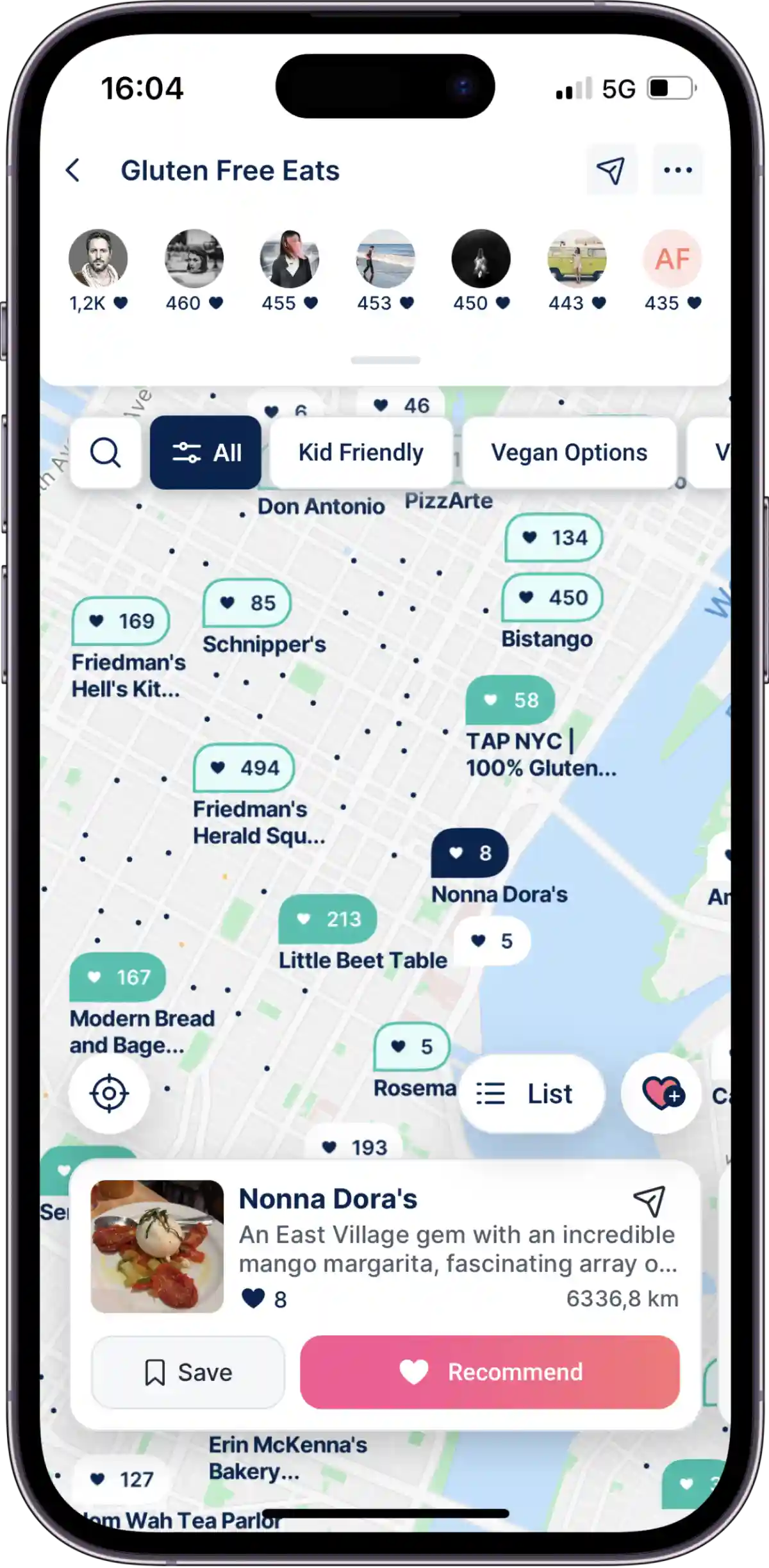


.webp.7a4dc8d65a0f04f33ba357dfbe1ac15b.webp)



